

THE USD VISTA
USD renames CID
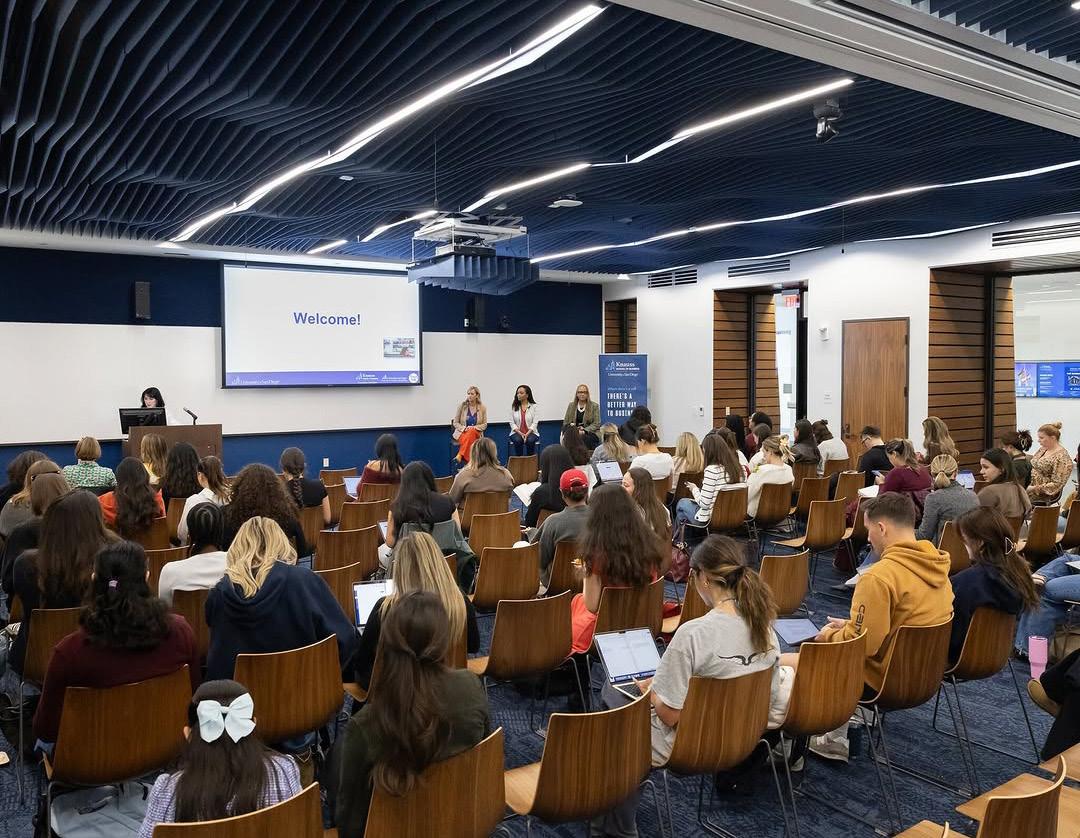
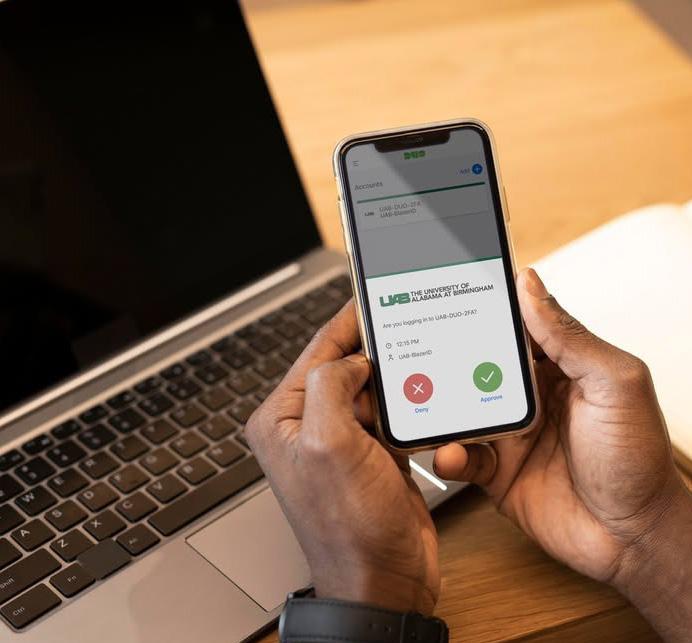
The University of San Diego officially changed the name of the Center for Inclusion and Diversity (CID) to the Center for Cultural Development (CCD). The renaming occurred in the summer of 2025 and was done as part of the CCD’s broad reorganization under a USD multi-year plan that started in 2021, which aims
to focus on “diversity, inclusion and social justice” with the goal of enhancing Catholic higher education. Two of those words were removed from the name this summer — “diversity” and “inclusion” were replaced with the phrase “cultural development.”
The USD Vista requested a comment on why the name change occurred. Cameran Zech, a media relations representative with the University of San Diego,
responded to that request.
“While the name may have been updated, the goals of the CCD remain important and unchanged: to enhance student learning, to create a campus culture that celebrates inclusive excellence, and to grow innovative practices to address the ever-shifting politics and poetics of difference,” Zech stated. “The updated name
Duo Push’s “Remember Me” feature is no longer available to USD students and faculty. In order for a student to perform a full Duo validation, they must log in with their credentials, receive the Duo Push notification and approve it on their mobile device. This process must now be completed for every new login a student makes into their MySanDiego student account. If their email is open on one tab, they will still need to utilize the function if they open Canvas in an additional tab. Since some students login
to their account multiple times a day, this increased security has caused annoyance. USD senior Zach Hanson reacted to the increased Duo Push validation requests.
“It is really annoying because now I have to go to Duo Push every time I need to sign in,” Hanson stated. “It’s especially difficult when I’m in a class, where there is not good service, because sometimes my phone doesn’t work and I can’t get into my USD account on my computer.” Students were notified of this change to the login validation in an email sent by the USD Information Technology
Tarvet takes on Wimbledon
This summer USD senior Oliver Tarvet hit the Wimbledon stage along with athletes from all over the world. The tournament is organized by the All England Lawn Tennis and Croquet Club in collaboration with the Lawn Tennis Association held annually in Wimbledon, London.
Tarvet has been playing tennis for USD since his first year with the Toreros. Tarvet competed against Carlos Alcaraz at Wimbledon, a Spanish tennis player who currently resides at the No. 1 ranking in the world.
Even though Tarvet was ultimately eliminated by Alcaraz, he put up strong competition against one of the world’s leading tennis stars. Tarvet spoke about what it was like to compete with professionals during his time playing in London.
“I think a big thing for me was kind of just treating it like every other match,” Tarvet said. “The stage is a lot bigger than anything I’ve ever played on, and obviously the opponent is a lot better than anyone that I’ve ever played, but nothing changes. From a tennis standpoint, I’m still getting a serve like in every other game. I’m still getting a return every game. I feel like I just did my
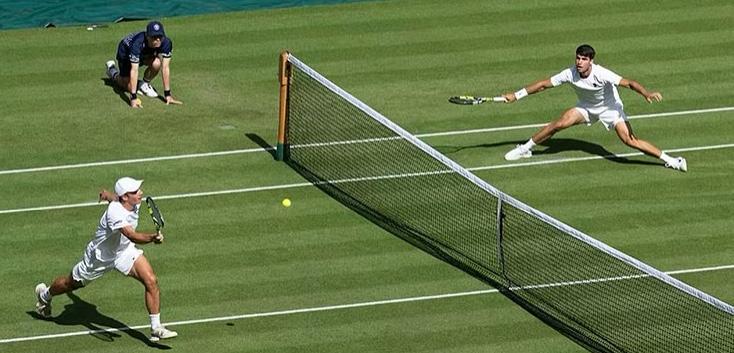

The Center for Cultural Development offers faculty and staff training, cultural events and student mentorship opportunities. Photo courtesy
CADEN HAYNOR NEWS EDITOR
must approve sign-ins from their phone for Duo validation.
PRIYA COOPER SPORTS EDITOR
CADEN HAYNOR NEWS EDITOR
ITS revokes ‘Remember Me’ feature
USD enhances Duo Mobile verification process
From Duo, Page 1
Services (ITS) Help Desk on Sept. 25, 2025. The notice alerted the USD community on why this initiative was put in place.
“We want to alert you to a rise in phishing scams targeting universities nationwide,” IT stated. “These scams attempt to deceive users into revealing personal information, clicking on malicious links, or granting access to sensitive accounts.”
One of these nationwide universities was Columbia University, which experienced a major data breach in August of this year. Nearly 900,000 students were affected, with compromised data being released. Multiple other universities, including the University of Chicago and the University of North Carolina, have experienced phishing scams recently.
The University explained the use that Duo Push has for USD student security.
“Duo is used to strengthen students’ and the university’s cybersecurity, and these changes add an important, additional layer of security,” Assistant Director of Media Relations Steven Covella commented on behalf of the University to The Vista. “The changes were made to
the login process after consulting with cybersecurity experts. Users are prompted to authenticate once every 12 hours per device, or if another browser is used.”
Many students at USD receive similar phishing emails to those at other universities, which are utilized by hackers to phish for personal information, like students’ Social Security Numbers. Many of these emails use what appears to be a USD email address to send a message that looks like a lucrative job posting or cheap item to buy. However, the email is actually looking for sensitive information.
Even Duo Push is not immune to phishers trying to get students’ information. Hackers have sent what appears to be calls or notifications from the Duo Mobile app, that are actually fake.
In an attempt to raise awareness about these attacks and arm students against them, the USD ITS Department regularly sends out phishing emails to USD students and faculty. If a USD community member were to press one of these links, they would be directed to a training module, which informs about how to detect and avoid these emails.
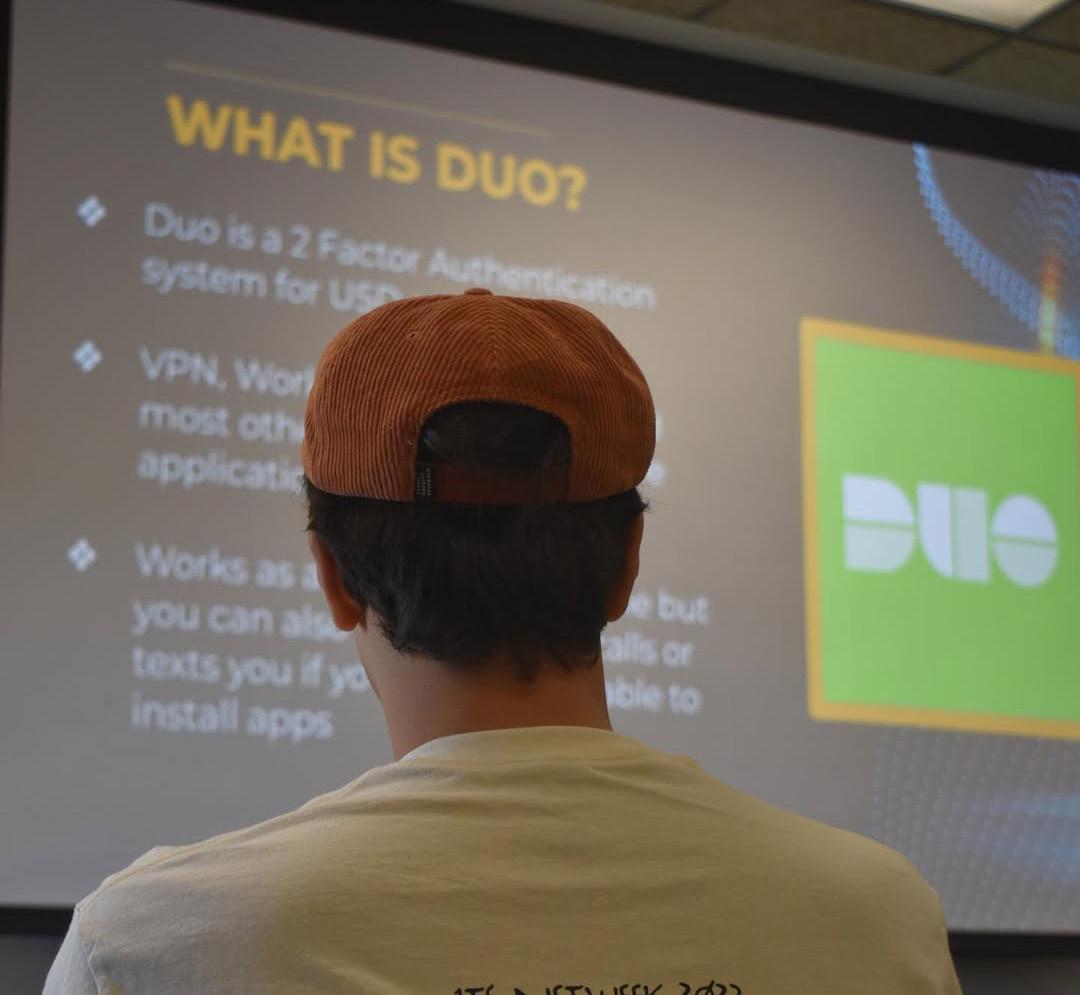
USD students ‘tapped out’
Poor status on water fountain filters raise concerns for Toreros
DAVID
COOK ASST. NEWS EDITOR
At the University of San Diego, red-lit water refill stations and long walks to filtered water machines have left Toreros out to dry. Across campus, students can find various types of refill stations. However, the reliability of some stations has caught the attention of students as they encounter machines marked by warning or those that have been taken out of service.
In buildings like Camino Hall, refill stations have sat with red lights glowing, a sign that the filters need to be replaced. Camino Hall is the home of the College of Arts and Sciences at USD, and houses over 100 first-years.
USD senior Burke Mansour shared his experience in the building. Mansour stated that the building’s filter has been experiencing consistent problems.
“As a comm major, I have spent a lot of time in Camino over the years, and the water fountain is always red,” Mansour said. “It’s deterred me from getting water at times. It would be nice to know for certain that I have filtered water outside my classes whenever I need.”
He added that larger refill machines, like those in La Paloma and the Student Life Pavilion, work better, but they are not always convenient.
“The bigger machines on campus are nice, but having to go to La Paloma or to the SLP to get a clean and cold sip of water shouldn’t be the standard,” Mansour said.
While Camino highlights issues in one of USD’s most central academic buildings, similar frustrations extend to student housing — particularly in the Valley.
USD first-year Taylor Allen told her experience as a resident of Valley B.
“I don’t think [getting water] is the most convenient thing considering you have to leave your building completely to get access to water,” Allen said. “You can get water from crossroads, in the laundry room or outside of crossroads or in Bosley… but can’t in my dorm.”
Mansour recalled back to his time as a firstyear living in the Valley.
“I think the water [at USD] has kind of been a disaster since I’ve attended the school,” Mansour said. “I remember being [in the Valley] and it being so hard to come by.”
Allen acknowledged the
difficulties that first-year students have staying hydrated.
“I typically go to the laundry room,” Allen said. “I’ve heard from everyone that the laundry room has the best water.”
University officials say that systems are in place to maintain refill stations.
Facilities Management (FM) said it is notified through work orders when a station or filter needs service and typically addresses them within one to two weeks. In some cases, older stations may be shut down if newer ones are installed nearby.
“If a station needs repair, the FM Department will repair it as soon as possible,” Facilities Management said. “If the station requires parts or other equipment, a repair may not occur right away. A station may be taken out of service when parts or other equipment for it are no longer available for repair.”
Officials also pointed to recent upgrades. The Palomar Health Student Wellness Center, Knauss School of Business and Learning Commons were all built with new water stations. In April, a new filling station was installed in front of Mata’yuum Crossroads.
Students, though, have said that the addition of the new filling station has not
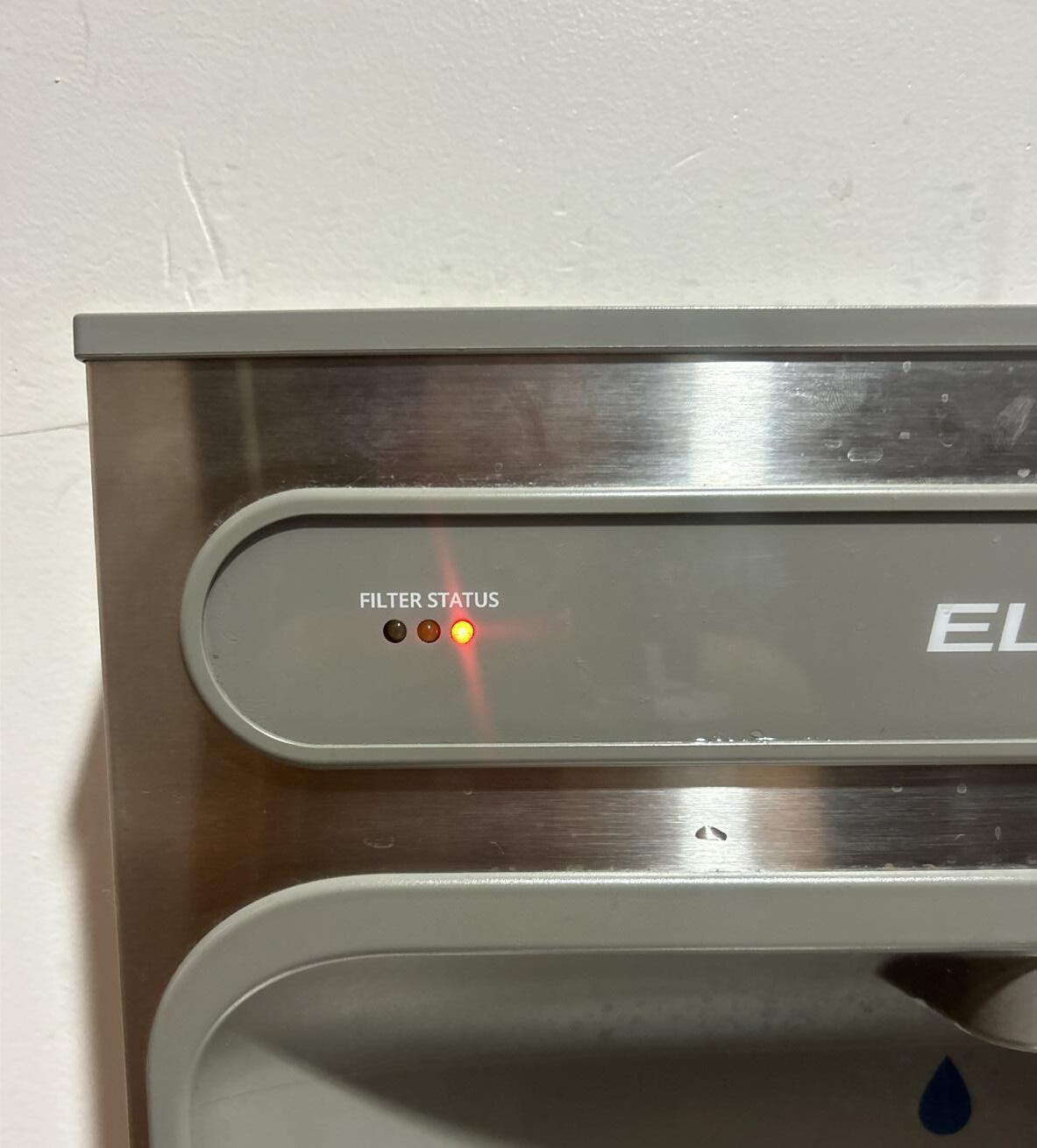
entirely solved the problem.
“I have used [the blue fountain outside Mata’yuum Crossroads] before and it kind of tends to be a little take longer to fill and it’s not very cold,” Allen continued. “I think it would be really nice if they were able to add water fountains or something of the sorts, at least in one floor of like the Valley B buildings,
and make sure that all students [in Valley B] have access to it.” Whether it is a red light in Camino, a broken station in The Valley or a long walk to find clean water, many say that the University’s standard has not met their expectations. Despite this, new facilities and upgraded stations may offer some signs that improvements are possible.
Duo Push is a cybersecurity platform that requires
The Camino Hall water fountain was pictured red on Sept. 18. Lauren Ceballos/The USD Vista
USD peels inclusion and diversity off walls
The University renames Center for Inclusion and Diversity
From Center, Page 1
reflects our commitment and alignment with the Catholic intellectual tradition in serving all students, supporting the entire community and celebrating the dignity of all humans.”
USD sophomore Sofia Jahraus outlined her reaction to this comment by the University.
“I can’t believe that was their only response to that,” Jahraus stated. “When they named this center something else, they immediately targeted those in marginalized communities. Those people that feel less represented by the name now feel less heard by their university. They need to actually respond to that.”
Despite the name change, the Center still offers faculty and staff training, cultural events and student mentorship opportunities. The Center began actively hosting events and publishing under its new name, with the University’s Juneteenth celebration. They have continued events throughout the summer and into the school year.
Recently, universities such as Columbia and Harvard have come under heavy scrutiny from the Trump administration for their diversity, equity and inclusion (DEI) programs and clubs. Despite this outside scrutiny, other Catholic universities, Santa
Clara and Loyola Marymount University, have an office for diversity and inclusion and an area on their website dedicated to diversity, equity and inclusion respectively.
Earlier this year, USD received a civil rights complaint from the Legal Insurrection Organization, that placed them under attack for DEI organizations and scholarship opportunities. The complaint claimed that these opportunities were discriminatory toward white students.
Jahraus outlined her reaction to USD’s renaming and the importance that she finds in the words diversity and inclusion.
“In general, I think it’s pretty spineless of the University,” Jahraus stated. “I think they’re trying their hardest to not offend anybody, but by doing that, they show fear in those words — diversity and inclusion. It is people trying to get away from DEI, but we don’t need to sugarcoat diversity, equity and inclusion.”
As USD students and faculty seek mentorship and the celebration of identities through this center, they will continue to test whether this new name reflects Catholic intellectual tradition or misrepresents marginalized communities.
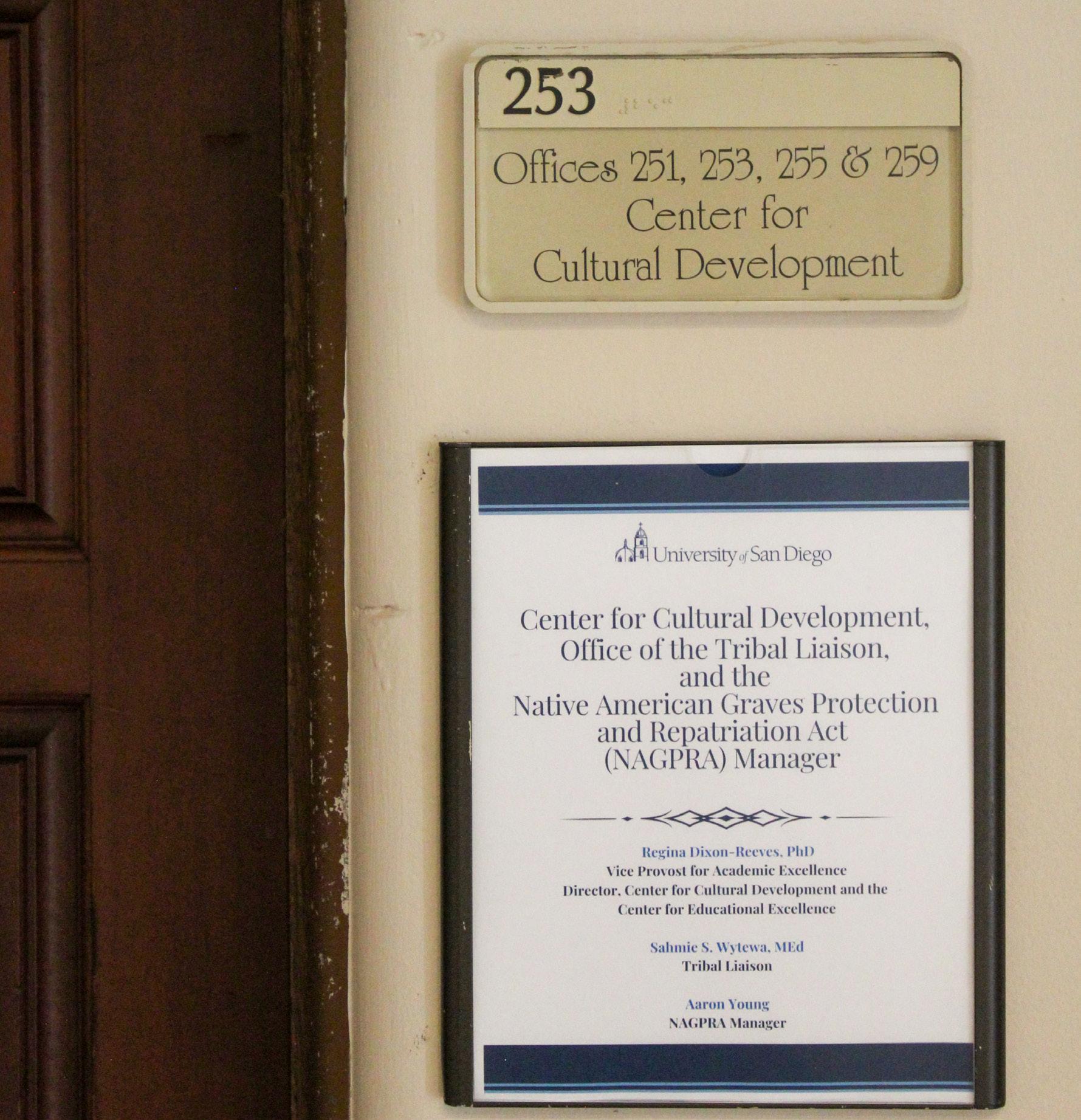
NTT union officially approves contract
HAYNOR NEWS EDITOR
Following a year-long negotiation process, nontenure track (NTT) faculty members approved their first union contract. This ratification occurred on Friday, Sept. 26 with 99% of participating faculty voting “yes.” The contract will continue until its expiration in March 2028.
According to the Service Employees International Union (SEIU) Local 721, this union contract includes a 3% increase for terminal degree holders under the new scale, job assignments based on seniority and an appeal process for union members who are not renewed or who have their contracts modified. These
First USD union contract ratified last week
examples are among multiple changes to NTT work contracts.
In a statement to KPBS, union bargaining team spokesperson Soroya Rowley explained some of the outcomes of this contract ratification.
“Now, we have more transparency and a system of seniority,” Rowley stated. “Folks will either be hired for new assignments or, if we need to make cuts, let go from classes based on their seniority.”
The NTT union went on strike last year, where nearly 200 students, faculty and community members picketed. This was mainly in response to wage cuts and course reductions for NTT faculty.
Now, the ratified contract includes a new base wage
The USD Vista
scale with pay increases for CAS faculty by title and a 10% “cancellation fee,” if USD decides to decrease a union member’s final workload after July 1 for the fall semester or Dec. 1 for the spring semester.
In a statement to KPBS, the University of San Diego spoke about their interactions with the NTT union.
“We value the tremendous contribution that our (nontenure-track) faculty members make to our university,” USD stated. “For nearly a year we have made extraordinary efforts to bargain in good faith with the representatives of the (nontenure-track College of Arts and Sciences) faculty union. And we have an obligation to ensure that our university remains financially sustainable
order to fulfill our mission.”
Now that the contract has been officially ratified, union members will work
with these new parameters. USD community members will continue to consider the consequences of this contract.
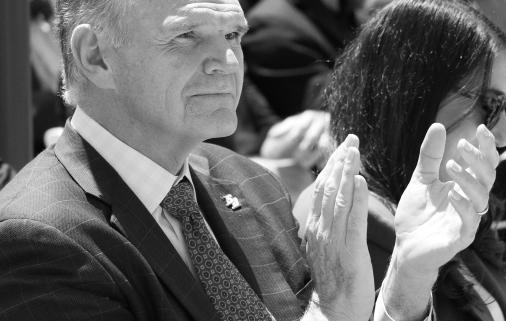
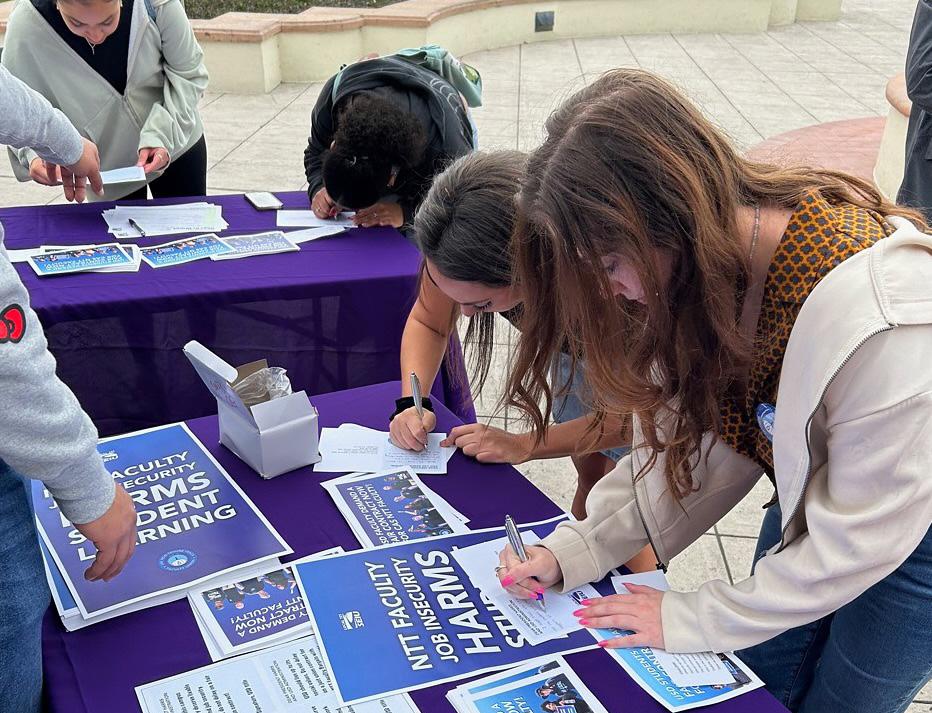
The Center for Inclusion and Diversity was renamed the Center for Cultural Development. Hailey Howell/The USD Vista
The union contract includes pay increases and job security for NTT faculty. Photo courtesy of @usd_nttfaculty/Instagram
ARTS & CULTURE
Have you been ‘shrekked?’ A tall tale of being dumped by a charity case
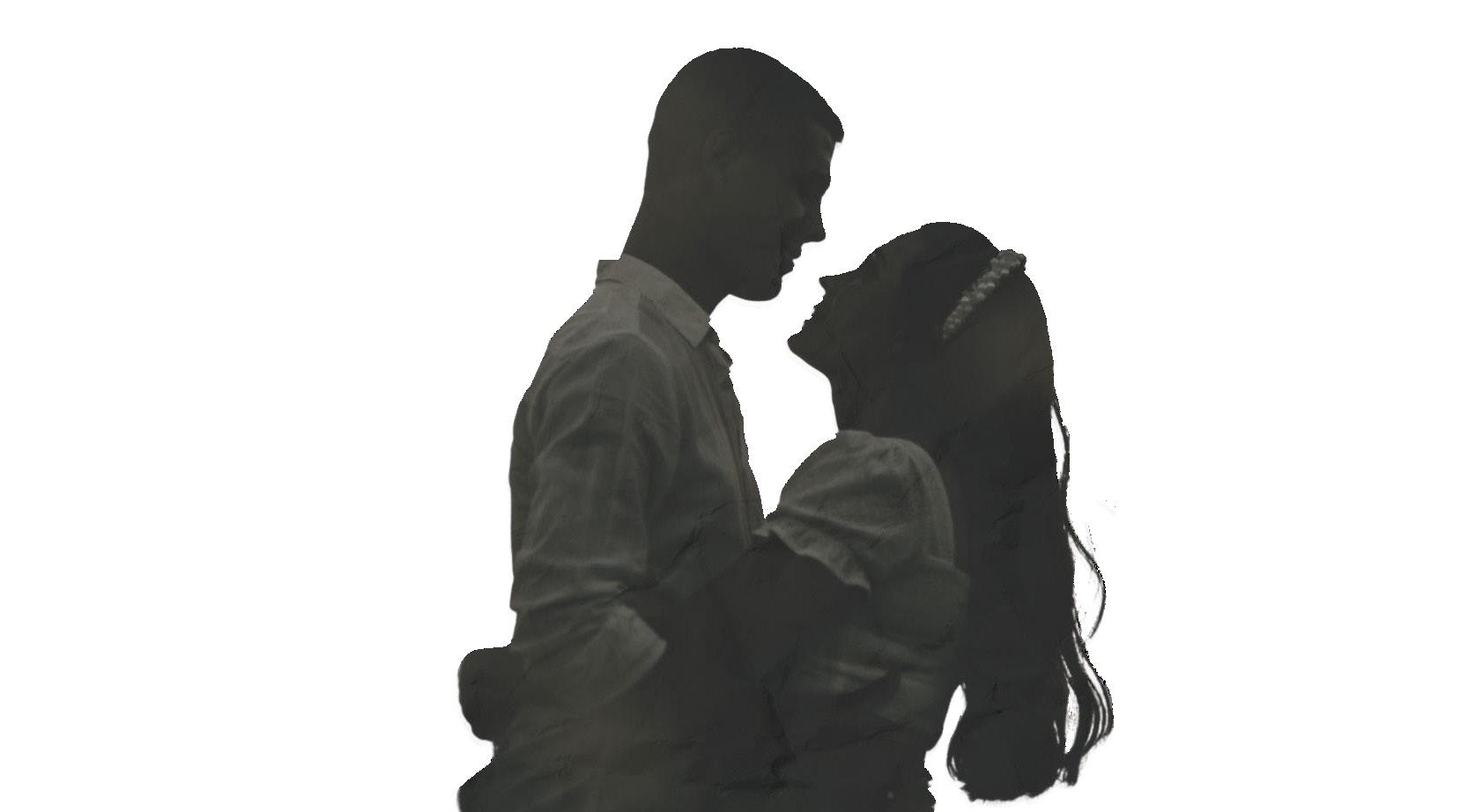
nor a prince to be kissed, but when an ugly guy gets a pretty
GAMES Crossword of the week:
Peepeepoopoo
LARA DOMINIQUE SOLANTE COPY EDITOR
ANJALI
DALAL-WHELAN ASSOCIATE EDITOR
LAUREN CEBALLOS
EDITOR-IN-CHIEF
1. This dinosaur can fly.
The ___ line separated slaveowning states from abolitionist states.
4. The highest point of a wave
5. Taylor Swift’s 12th album “The Life of a ___” will be released on Thursday night.
7. The singer of the 1963 song, “Ring of Fire”
8. The headliner of the next Super Bowl
9. Which element is in the top right corner of the periodic table of elements, with the atomic number 2?
girl, suddenly he’s worth more,” Gonzalez said. “When in reality he’s still ugly so then he starts gaining more confidence and thinks he can cheat on you or something but you should always either humble him or dump him when he starts doing that.”
Despite the risk of getting shrekked, some Toreros still think that looks aren’t all that matters when it comes to finding a potential suitor. USD senior Elena Williams shared that she searches for more than good looks when looking for a relationship.
“I really look for someone who can make me laugh ans someone who can support me,” Williams said.
Although getting shrekked may sound monstrous, Toreros still continue to wish for a happily ever after — even if it is an ogre.
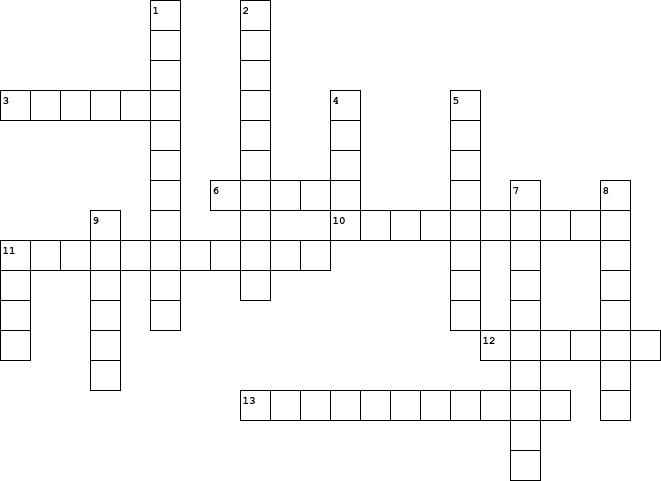
11. What is the most commonly eaten food? 6. In the NFL, this team represents the city of Detroit.
What is the name of the pig in “Charlotte’s Web?”
3. What is the name of the pig in Charlotte’s web? 6. In the NFL, this team represents the city of Detroit. 10. _____ is the Mayor of San Diego.
____ is the Mayor of San Diego.
11. Author of “The Road Not Taken” 9. Where the author of an article’s name is written See last week’s crossword answers on Page 9.
Author of “The Road Not Taken” 12. Where the author of an article's name is
13. The 33rd president of the United States
1. This dinosaur can fly 2. The _________ line separated slave-owning states from abolitionist states.
4. The highest point of a wave
5. Taylor Swift’s 12th album “The Life of a ______” will be released on Thursday night.
7. The singer of the 1963 song, “Ring of Fire.”
8. Who is the headliner of the next superbowl?
9. Which element is in the top right corner of the
K-Pop popping off on campus
Katseye and ‘KPop Demon Hunters’ explode K-Pop culture
RILEY RAINS ARTS & CULTURE EDITOR
K-Pop, or Korean Pop music, is a globally popular music genre that blends a variety of musical influences like hip-hop, electronic dance and rock. The music genre has quickly exploded in popularity in light of Katseye’s recent Gap advertising campaign and the movie “KPop Demon Hunters.”
Korean Pop culture can be traced back to the 1990s when a group called “Seo Taiji and Boys” performed songs on a broadcasting system. The sound and choreography were an American blend of hip-hop, rap and rock that exploded the genre globally. Seo Taiji and Boys sold 2.13 billion albums and the first “generation” of K-Pop was born.
K-Pop’s evolution can be divided into the “generations” of their development. USD’s Director for Community and Leadership Development, Dr. Ariela Canizal, explained what she knows as a K-Pop superfan.
“In K-POP, ‘generations’ describe eras of artists and fandom culture, each with its own style, technology and global reach,” Canizal explained.
“The 2nd generation laid the foundation for global fan communities, while now we’re in the ‘5th generation,’ marked by experimental concepts, social media innovation,
and worldwide influence.”
Katseye is a part of the 5th generation. The K-Pop girl group is composed of six members: Lara, Manon, Megan, Sophia, Daniela and Yoonchae. With members from South Korea, Switzerland, the Philippines and the United States, Katseye is often referred to as a “global girl group.”
The vast diversity of these women is part of what added to the allure of their dancing. Students were refreshed to see the representation of this group of women.
USD sophomore Skylar Grani shared her thoughts.
“The dancers come from all different backgrounds and hold a lot of different identities,” Grani said. “I like how they represent everyone. It is a powerful message.”
Katseye grew in popularity after their Gap ad went viral in response to the American Eagle campaign. The tagline of the Sydney Sweeney’s commercial was “Sweeney Has Great Jeans,” a play on the words between “genes” and “jeans.” The ad ignited controversy, with some saying that it was supporting corrupt beauty standards. Meanwhile, others praised the ad as it stood against “woke” culture. The Katseye rebuttal immediately went viral in light of their pointed diversity. Grani explained her opinion of the two campaigns.
“I thought the Katseye ad for Gap was way better than the American Eagle one because [Katseye] is promoting more inclusivity,” Grani argued.
Inclusion is something that is prevalent in K-Pop culture. The Korean artistic form has spread throughout America, encouraging Netflix to release “KPop Demon Hunters,” a movie that has seen major success.
USD senior Kevin Curran enjoyed the animated film because of its artistic qualities.
“It had an awesome story, memorable characters and catchy songs,” Curran explained. “My experience was great. I watched it by myself first and then with a big group of friends and both times it was amazing. Going with friends was a lot more fun.”
The film has broken Netflix records to become its mostwatched film in company history: 325 million views since its release in late August. “KPop Demon Hunters” has also topped the Billboard Hot 100 with its original soundtrack — most notably, “Soda Pop” written by Vince, KUSH and Danny Chung.
The Sony Pictures production blends K-pop music with action and supernatural fantasy, captivating fans of all ages.
The film surrounds a fictional K-pop girl group, “Hunter/x.” The group leads
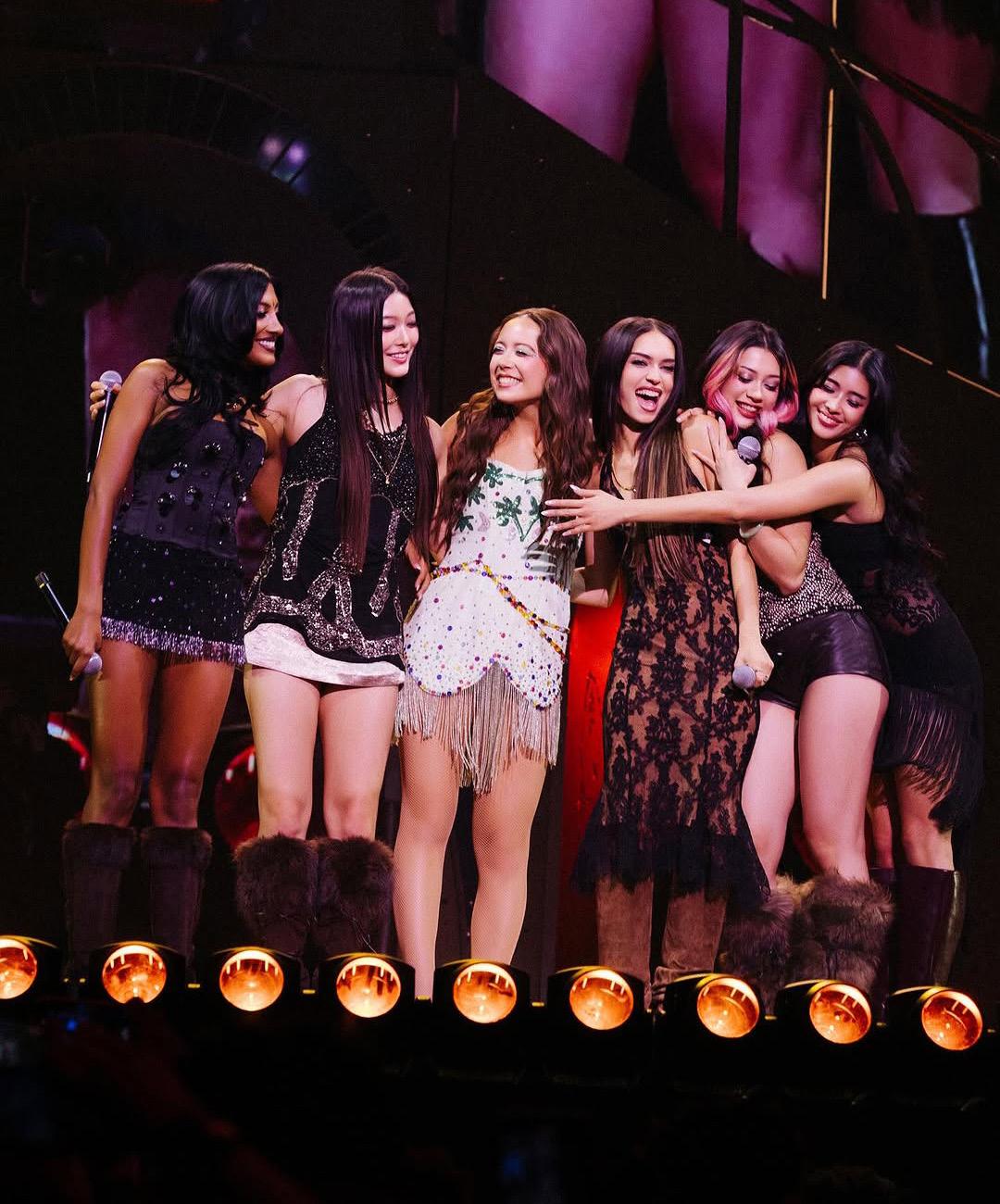
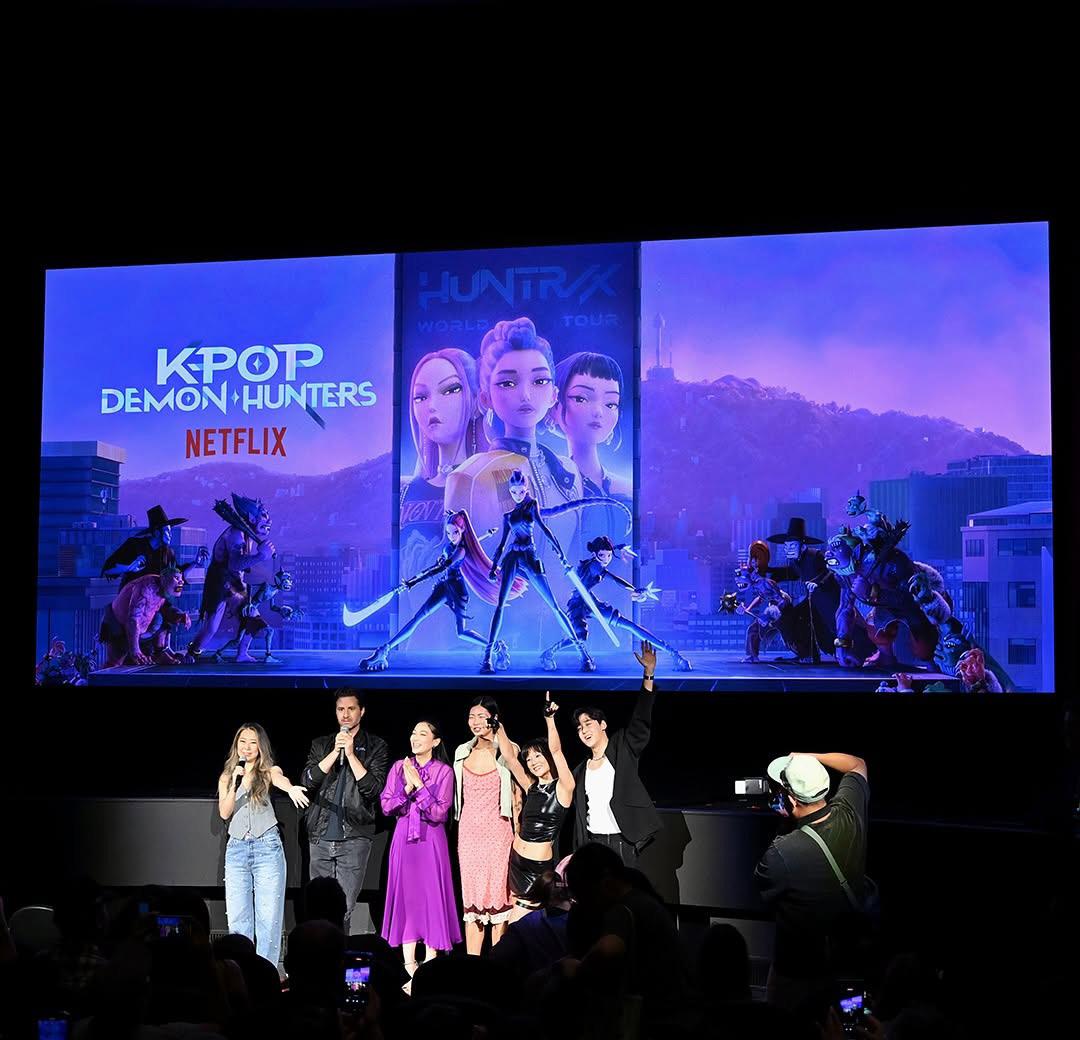
double lives as demon hunters. They face off against the Saja Boys, a rival boy band, whose members are secretly demons. Maggie Kang, the director, writer and creator of the animation, commented in an interview to Geeks OUT — a non-profit organization whose mission is to “rally, promote, and empower the queer geek community.”
“As an animation director I want to make animated films for a broader audience,” Kang argued. “I think almost every artist in the industry is frustrated that we are put in the kiddie corner of Hollywood. Animation is for everyone. Sometimes it’s actually for an older audience but it happens to be safe for kids to watch.
[We made] a movie with deep, ‘adult’ themes that can resonate with an older audience but accessible/enjoyable for a younger audience.”
Kang’s wish was received: students all over campus watched and enjoyed the K-Pop film. USD senior Sadie DuBois appreciated seeing such a wide range of people join in on the latest K-Pop craze.
“It was a super enjoyable, well-paced movie that kept me interested the whole time,” DuBois reflected. “I think it’s awesome that a movie that was probably geared towards younger people is getting so much attention from people of all generations in
different parts of the world.” USD staff is a part of the “KPop Demon Hunters” fandom. For Dr. Canizal, K-Pop is an integral part of the USD campus.
“For me, K-POP creates what I would call a ‘third space,’ a place beyond home and the classroom where people can gather, connect and feel a sense of belonging,” Canizal explained.
Canizal has seen the explosion of K-Pop culture in the USD students that she works with.
“You can see it in small, but meaningful ways such as students gathering for dance covers, playing K-POP songs in various spaces, or incorporating fandom into student org events,” Canizal noticed. “[Toreros] express their love through merch or laptop stickers, while others collect photocards, small photo prints of idols that come with albums and are often traded like treasures within the community. Even if it’s not always loud or mainstream, the love for K-POP is alive and thriving.” With social media promoting the “KPop Demon Hunters” songs used for popular dances and Katseye’s ads circling screens everywhere, there is no doubt that K-Pop has infiltrated its way into San Diego. USD students are happy to see their interest receive so much love.
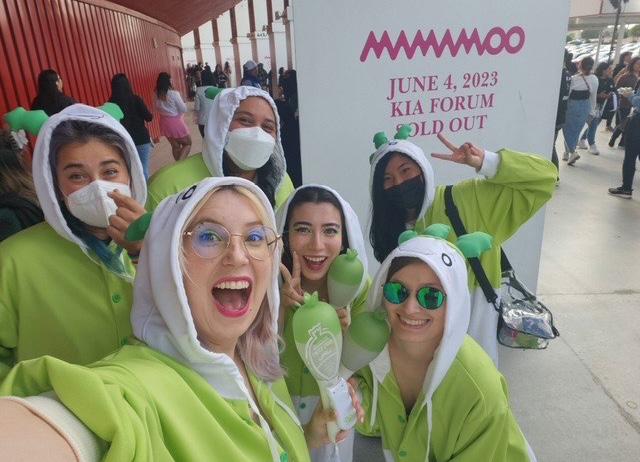
Katseye’s surprise appearance at a Laufey concert in Los Angeles.
Photo courtesy of @katseyeworld/Instagram
Dr. Canizal and her friends at a K-Pop concert.
Photo courtesy of Dr. Canizal
KPop Demon Hunters producers at the movie’s debut.
Photo courtesy
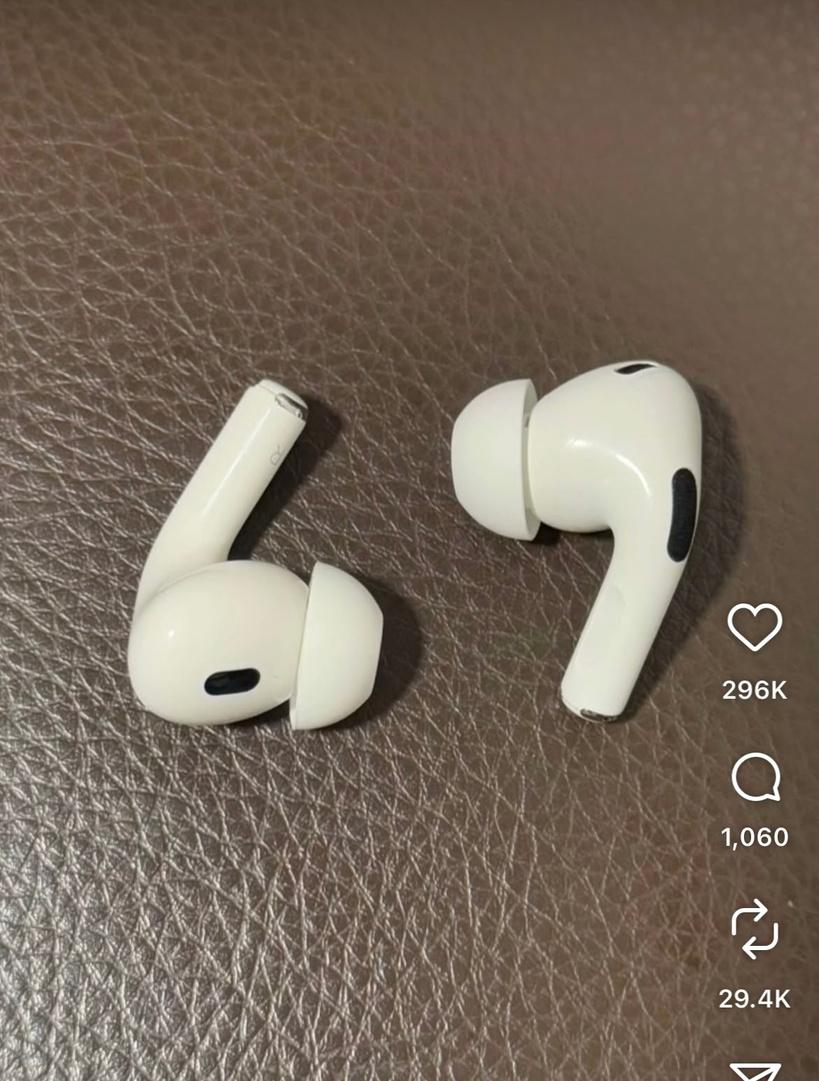

“My favorite brain rot meme is 67 It shows up way too often in class, but every time I hear it , I actually end up paying closer attention to the lecture ”
Gavin Emerzian, junior
The phrase “6-7 ” originated from the song, “Doot Doot (6 7)” by Skrilla Paired with a “ this or that ” hand motion, this meme is commonly used in basketball video edits
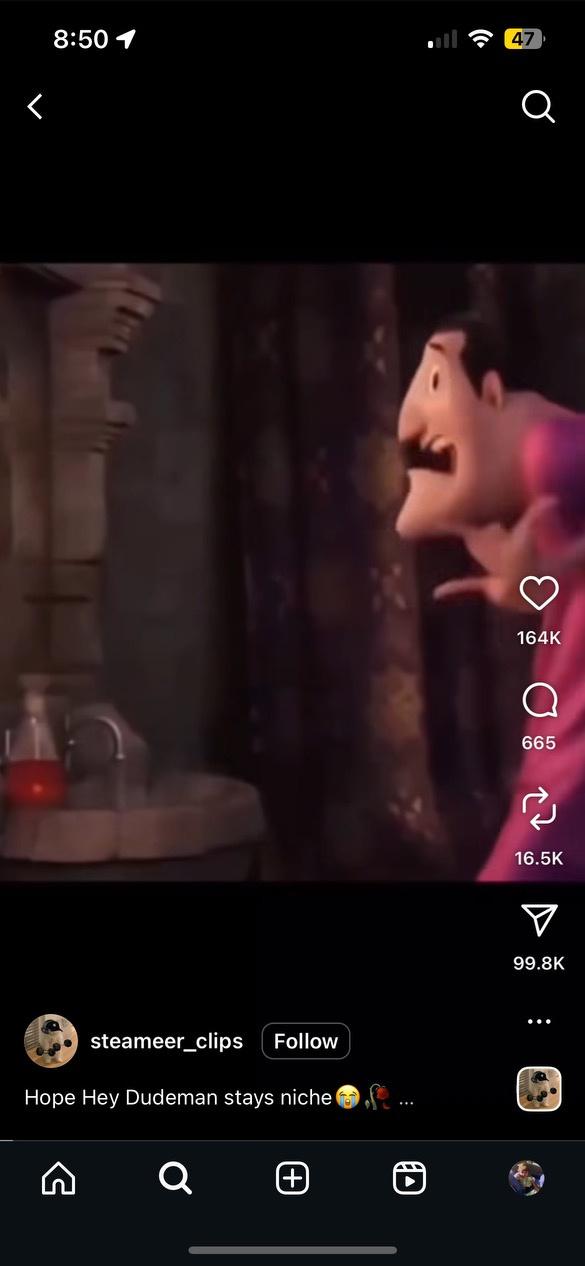
“I like the dudeman one because it ’s stupid, makes no sense, and isn’t even funny But that ’s what makes it funny It ’s like the purest form of meaningless, unfunny content that somehow makes you laugh ”
August Heinen, junior
“Dudeman” comes from the movie “Hotel Transylvania , ” in which the main character dances while saying, “Hey dudeman, I’m a dudeman ”
Torero T

What’s your favo
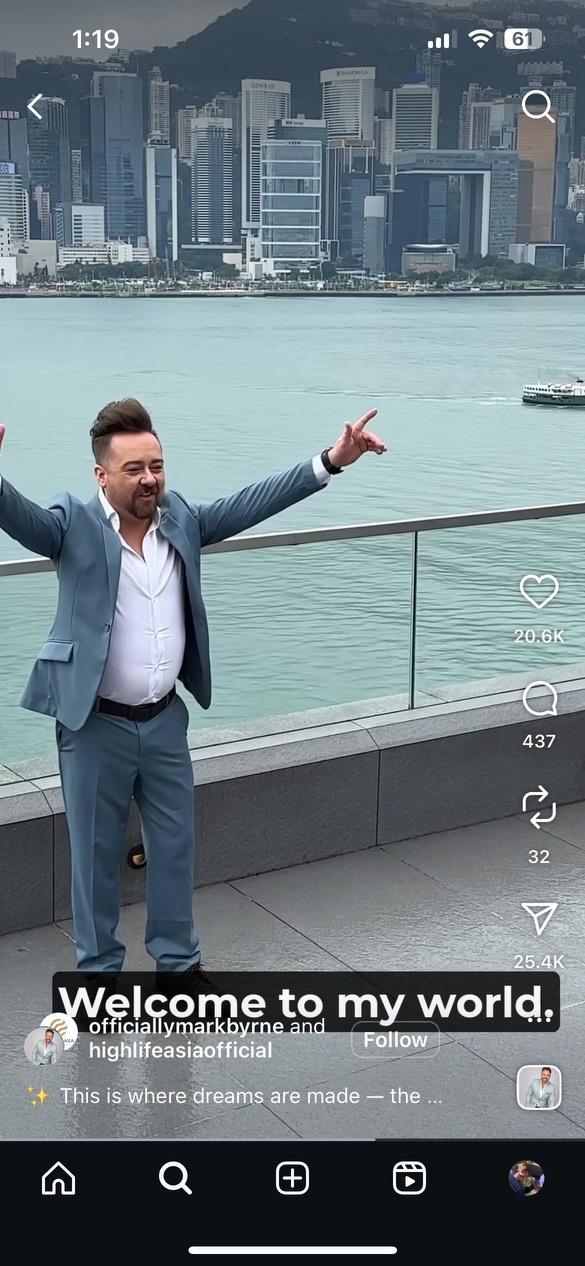
“My favorite brain rot is ‘HighLife Asia’ because it is incredibly niche Every time I watch a promotional video of HighLife Asia I am on the edge of my seat . I have been following Mark Byrne for a year now, and he knows exactly what words to use to get me excited about HighLife Asia ”
Iggy Wozniak , junior
‘HighLife Asia’ is a reality TV show hosted by Mark Byrnes
Ballerina Capu
Toilet, Grimace s are only a few st online subculture
Brain rot has evol than a decade of and memes that be understood b have a daily scree eight hours. It’s way people com each other popping up vocabulary, suc “gyatt” and “hu difficult to unders who are not chro there is a brain everyone. Torero seven of their fav brain rot that ha “rizzed” th

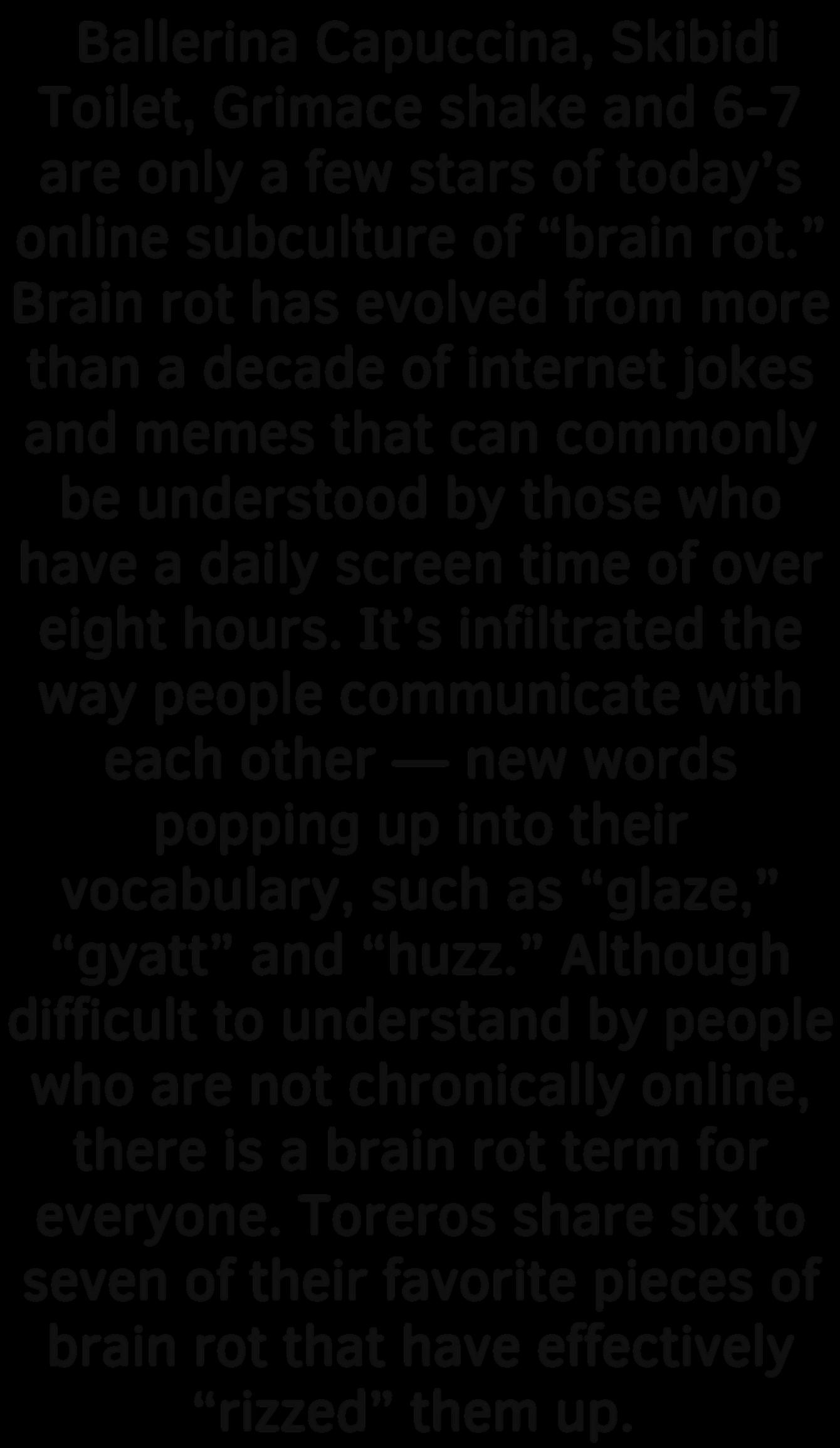
Photo courtesy of @officallymarkbryne/Instagram
Photo courtesy of @steameer clips/Instagram
Photo courtesy of @wordsofworm/Instagram
Spread by Alissa Abramovich/ The USD Vista: Content by Lara Dominique Solante/
Tralala

orite brain rot?

ccina, Skibidi shake and 6-7 tars of today’s e of “brain rot.” lved from more internet jokes can commonly by those who en time of over infiltrated the municate with new words into their ch as “glaze,” zz ” Although stand by people onically online, n rot term for os share six to vorite pieces of ave effectively hem up.

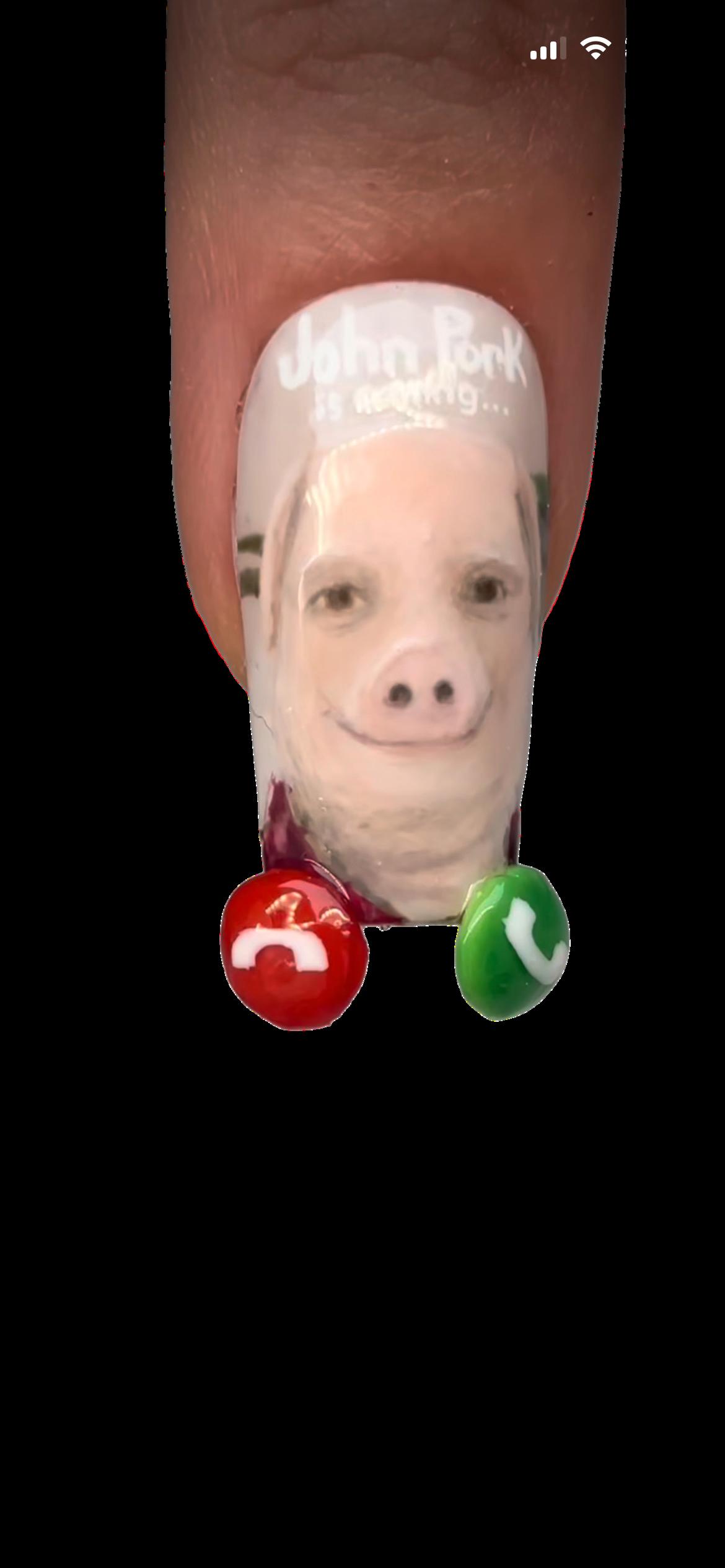
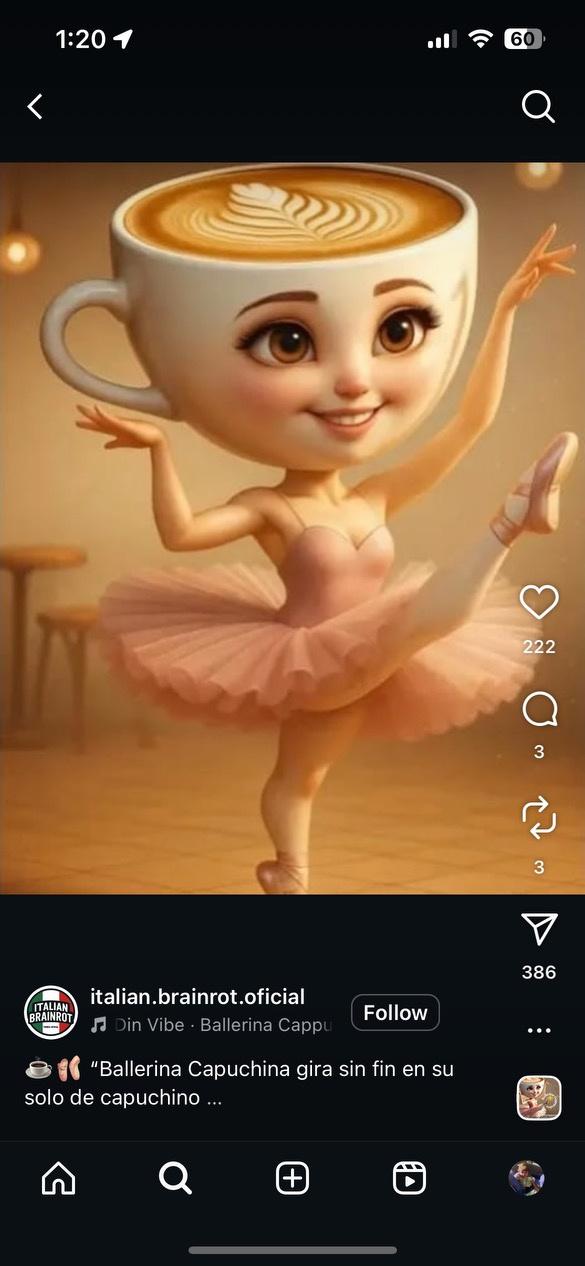
“I’m not super up to date with the latest TikTok lingo but one of my all-time favorite examples of brain rot is the logbook of Vines permanently stored in my head I’ll randomly quote them in any situation ‘ Wouldn’t you like to know weather boy? ’ or the legendary ‘apparently kid’ are two of my all-time favorites For the Gen Alpha , 2025 TikTok era though, I was completely obsessed with Italian brain rot ‘Ballerina Cappucina mi mi mi’ has basically become my go-to catchphrase for my cat ”
Sasha Milshtein, senior
Italian brain rot is a series of AI-generated hybrid creatures with names that sound Italian
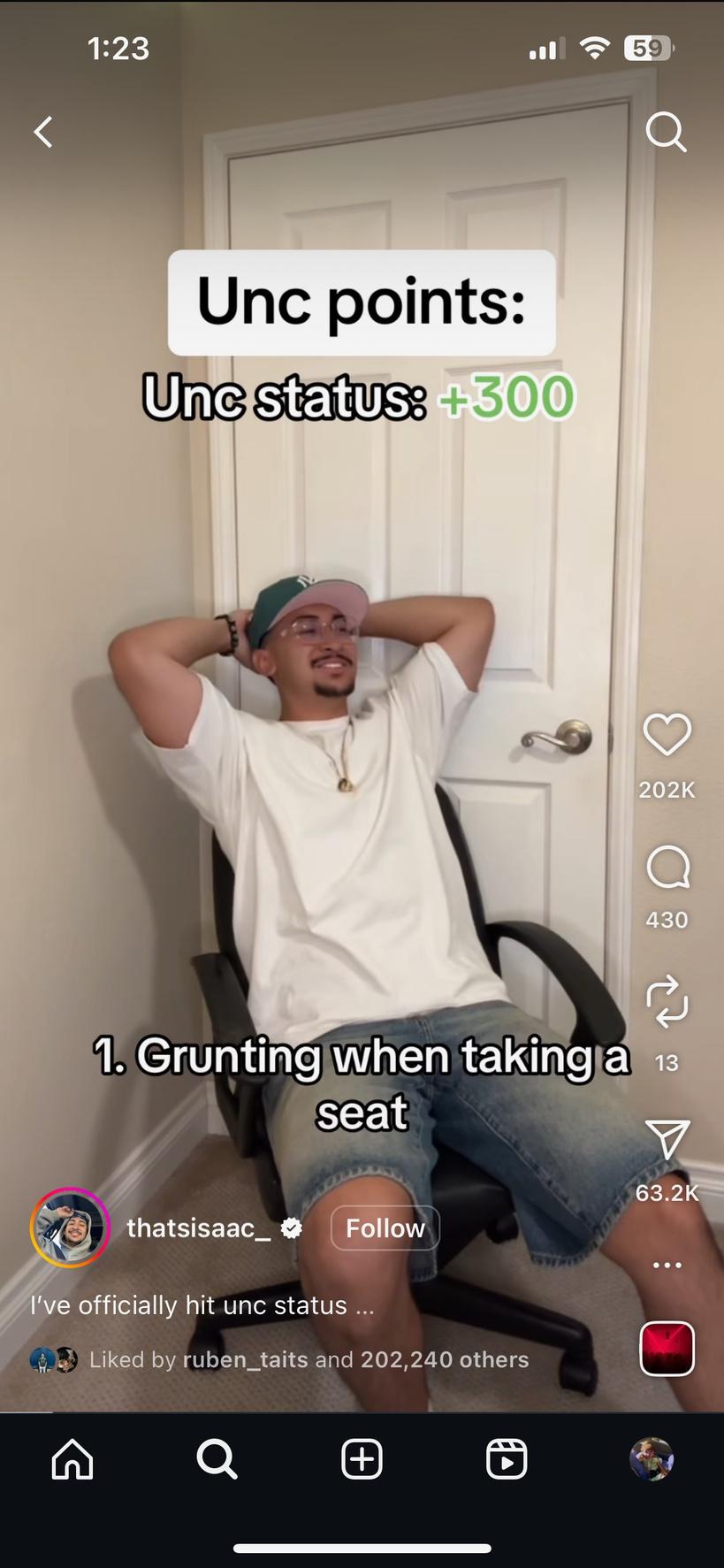
“I love saying ‘chopped’ and ‘unc.’ Sometimes I combine it and say chunc.”
Avery McDowell , senior
When referring to someone as “chopped,” it means that you think they are unattractive. The term “unc ” — pronounced “unk ” — is short for “uncle,” referring to someone who is old and unaware of current trends
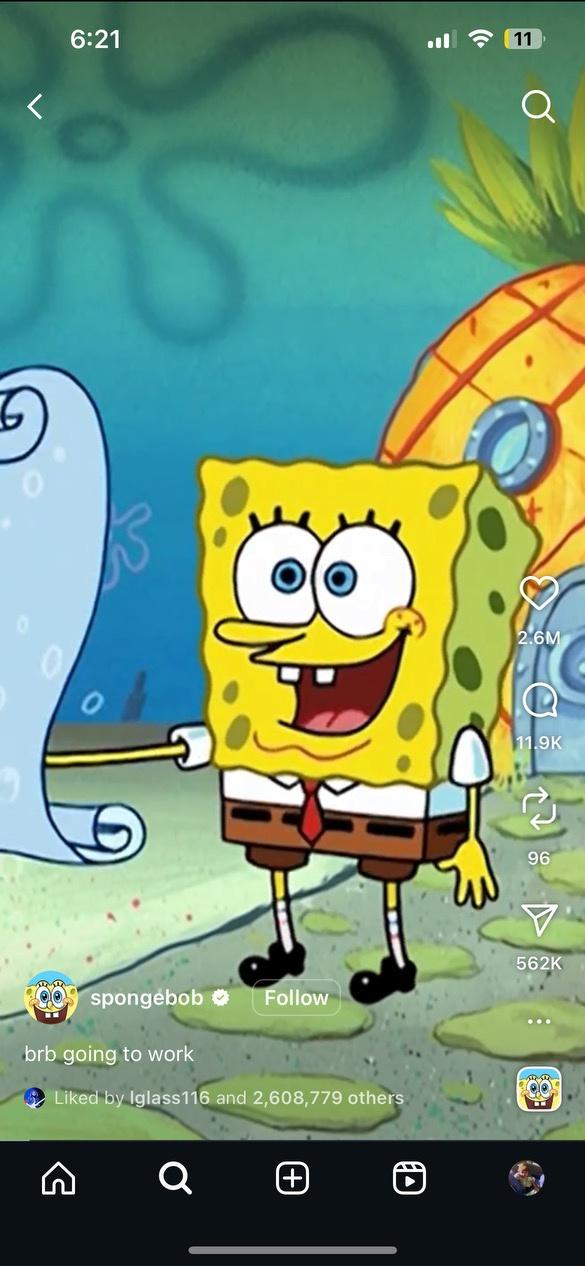
“My favorite brain rot is watching SpongeBob in Farsi It is my first language, but I’ve lost a lot of it over the years, so watching SpongeBob in Farsi acts as a way to maintain my fluency, but it ’s also just hilarious, even if you don’t understand Farsi I recommend everyone to give it a watch on their next brain rot stint ”
Nadia Hedayati, senior
Photo courtesy of @italian.brainrot official /Instagram
Photo courtesy of @italian.brainrot official/Instagram
Photo courtesy of @thatsisaac/Instagram
ARTS & FEATURE
What’s going on up there?
A close look at the SLP’s third and fourth floors
AMELIE SEDLACK FEATURE EDITOR
While most students frequently find themselves on the first and second floors of the Student Life Pavilion (SLP), many students don’t realize all the resources that sit right above them.
The fourth floor of the SLP is home to The Commons and student media while the third floor houses the Changemaker HUB, the Creative Zone, Fraternity and Sorority Life (FSL) and more. Many students don’t realize that these spaces exist for them and that there is a plethora of resources and opportunities that they can find up the stairs of the cafeteria.
On the third floor of the SLP, Toreros can find the Creative Zone, the International Student lounge, FSL and the Changemaker HUB.
USD senior Blanca Gonzalez works in the Creative Zone and spoke on what the center offers to students.
“We do offer free resources for students such as arts and crafts making, painting supplies,” Gonzalez said. “We also offer printing services and poster services … We have friendship bracelet beads. Sometimes we have monthly theme events … Everyone there either goes for project making or they like working on personal stuff … I know a lot of people go in to make gift cards for friends.”
Even though this space exists for students and is free of costs, the Creative Zone has low attendance by students during the semester.
“Usually during my shift there’s about ten people that come in,” Gonzalez said. “I feel like every time that I hear someone come in they say ‘I wish I knew about this place sooner,’ or ‘I would have saved tons of money just coming here for the free supplies.’ If I hadn’t worked there would I have known this place existed. I wish there was more people who knew about this place, just because it’s very valuable. It’s on campus so it’s easy access.”
The Changemaker HUB is where students can work with a team of students and staff members to bring their ideas of sustainability and equality to life on campus and beyond.
Dr. JC Rivas, the director of social change and student engagement for the Changemaker HUB, explained what they do at the HUB.
“We provide opportunities for students to engage in social change in a way that is three venues,” Rivas said. “One is attending social change field trips, which is once a month. We go to a specific non-profit … Two, we have a couple volunteer
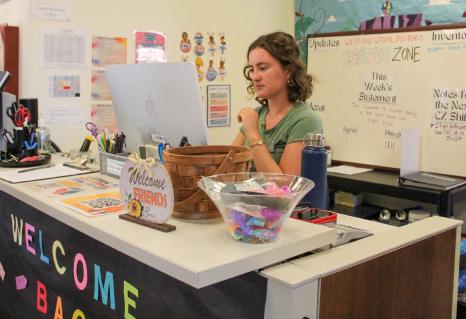
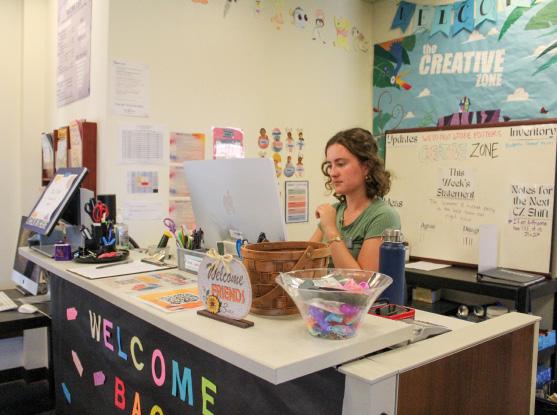
opportunities for people to do …
The core of what we do is … make our campus more sustainable, more inclusive, more equitable.”
Rivas continued to talk about all the opportunities the HUB has created for students.
“I wish that more people knew, for example, the podcast we just hosted, ‘There’s More,’” Rivas said. “I feel like many more people could be involved. I think sometimes it feels hard to find.
Once you get to the third floor, you realize there’s a whole life out here, it’s just getting them here. If more people spend more time up there, they’ll meet likeminded people who are already involved or want to get involved.”
The fourth floor consists of the Women’s Commons, LGBTQ+ Commons, Black Student Resource Commons,
The Women’s Commons hosts “Stitch and B----,” a crochet night every two weeks in which students may come ready to learn or bring their own projects. They can snack, listen to music and have a chance to discuss topics relating to fiber arts and the politics of crafting.
The LGBTQ+ Commons, Black Student Resource Commons and Multicultural Commons all host their own events which can be found on their websites or on flyers posted around the school. In the Radio booth, TV editing room and the newsroom, Toreros work to create student media, including the school newspaper and radio shows.
The International Student Lounge is also located on
floor of the
This space is used to welcome international students to campus and act as a point of contact for questions and a place for students to meet and support each other.
USD senior Federica Benini spoke on the everyday of USDtv and advice for prospective members.
“I feel that students may be intimated by the organization or just don’t know where to start,” Benini said. “My biggest advice to all students who are interested in joining USDtv is to come to our taping and pitch meetings … You can connect with producers and see the work they do by shadowing them when they get interviews of students, and seeing the steps taken to making a story.”
USD senior and radio

director Lalita Arslan gave information on how students can learn more about USD Radio.
“If a student wants to observe how a radio show works, then tuning in to the broadcast would be a great way to observe a student DJ,” stated Arslan. “Because Radio is relatively newer, I think we’re still getting our name out there, but the students that do hear about it seem very interested! I see a lot of dedication and love from the members every semester!”
Erin Lovette-Colyer, the director of gender identity resources, gave a statement to The USD Vista on behalf of all the Commons.
“Each space offers programs designed to foster community and support students’ sense of belonging at USD,” LovetteColyer stated. “This takes the form of discussion groups, community building activities, dialogue series, a summit, cultural celebrations, a leadership retreat and immersion program. Students can find at least one event across the Commons every week. Most events offered include food and supplies free of charge to students. Students use the space to hang out, study, hold student org meetings and attend events. We always welcome more students to engage the space and attend programs.”
Many Toreros, especially first-years, do not know that these spaces exist on campus.
USD first-year Quoc Anh Vu spoke about knowledge only of the International Student lounge.
“I have [been upstairs] once for the international event,” Vu said. “I don’t really know if they have events there. I don’t know of anything else.”
Despite not knowing what other events that might be hosted on the third and fourth floors, Vu was open to attending an event.
“I would try to take a look,” Vu stated.
USD first-year Matea Cepielik shared in her willingness to check out events on the top floors of the SLP despite never being upstairs. Cepielik pointed out that the large amount of flyers, signs and posters that clubs and organizations use as their way to communicate with students. For her, this can at times come off as a little overwhelming.
“I’d say I look at flyers,” Cepielik stated. “I like to read signs. I don’t think most people read the signs. I walk by them all the time but I feel like most people don’t read them.”
Many resources exist on the third and fourth floor of the SLP, however, many students, especially first-years, are unaware of the resources that sit only a floor or two above the main eating area.
The USD Radio booth and The USD Vista newsroom.
the fourth
SLP.
USD senior Lalita Arslan working in the radio booth on the fourth floor of the SLP. Hailey Howell/The USD Vista
USD student, Shea Salamack, working at the main desk of the Creative Zone on the third floor of the SLP. Hailey Howell/The USD Vista
Friendship breakups hurt more Breakups don’t always get easier
RILEY RAINS ARTS & CULTURE EDITOR
When my romantic relationships come to an end, I know what to do: blast Jeff Buckley, grab a tub of cookie dough, pull up “our movie” and cry wrapped up in a blanket that his mom gave me. It feels like utter and complete despair. But, believe it or not, after a few months my pain goes away.
Those emotions stemmed from a relationship coming to an end my freshman year of college: four years on and off, out the window. I am now thriving in my solitude and can see, in hindsight, what I thought was the end of the world – a failed romantic relationship – was not. Quite frankly, my worst breakup wasn’t that romantic at all.
With my vast experience of gut-wrenching breakups, I firmly believe that the worst heartbreak I have ever felt came from a girl who liked green fluffy slime more than my favorite butter yellow. Even at 12 years old, I could tell that friendship breakups would be more painful than romantic ones.
After I had joined swimming in middle school, I started gravitating toward teammates instead of my childhood best friends. The life of a student-athlete got the best of me and I forgot to text the girls I grew up with. Very quickly, I lost relationships because of my own ignorance. Instead of getting my hands sticky with glue, I chose pruney, chlorine stained fingers – a choice I will always regret.
When we are young,
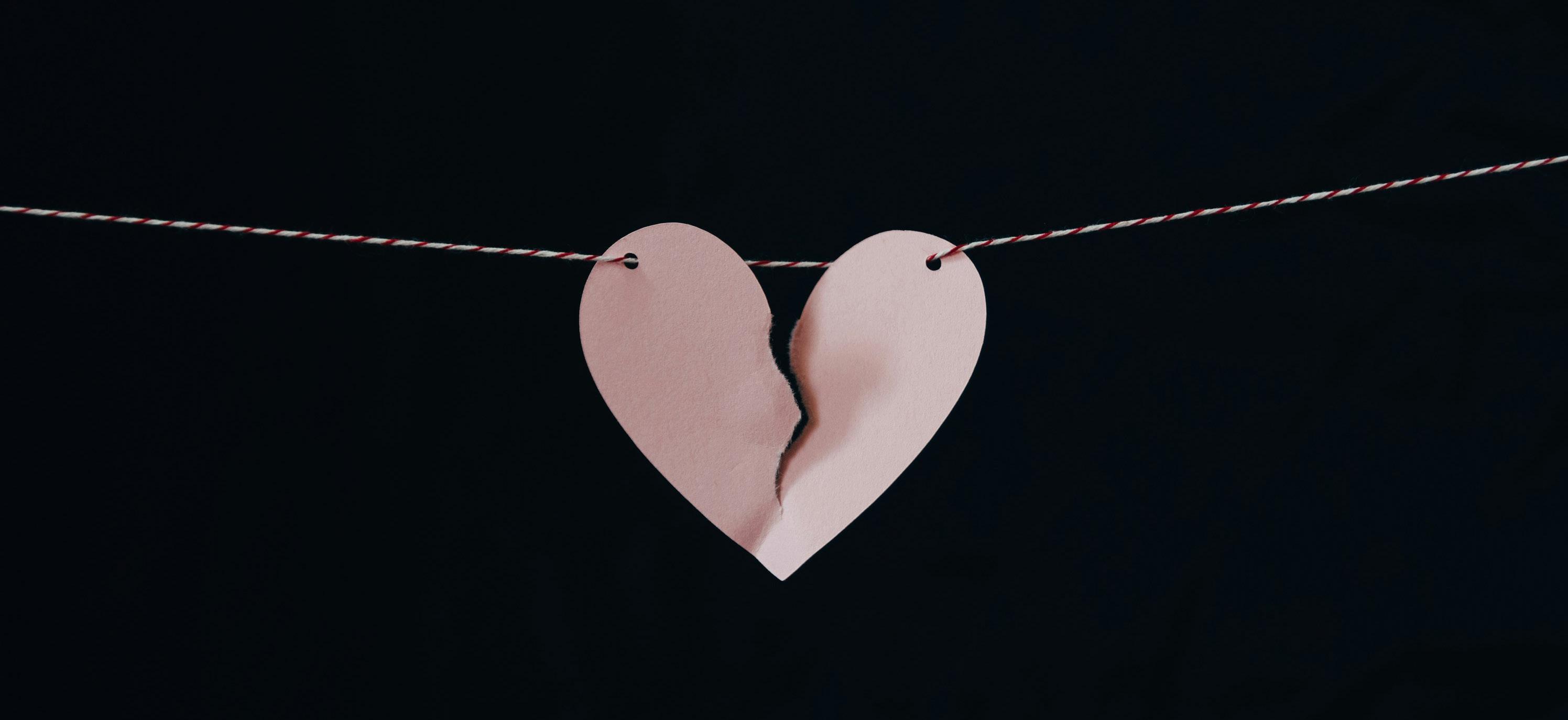
relationships are chosen for us — parents and siblings are givens of course. After children begin to think for themselves, around the age of four or five, friends enter the picture: they are the first relationship chosen freely. Whether it’s a girl on the gymnastics team or a boy in math class, childhood friends form on the basis of how people interact with peers.
In high school, friendships ebb and flow as students try to discover what qualities and characteristics they prefer the people around them to have. If you’re lucky, the friends made during those years stick around for a while. But, more often than not, however, it is in college where students find their group.
For the first time in many Toreros’ lives, they are living with friends: sharing a room with roommates, eating meals together and cramming
for exams in the same study room. Living on or near campus means being around one another 24/7. That sheer amount of time enables deeper connections to be built, making the fall hit even harder.
After a standard breakup, it’s easy to trash talk an ex, block them and wash away any trace of them from daily life. With friends, trying to do that is nearly impossible. In college especially, lives can become so entangled with living arrangements, class schedules and social groups. After months and maybe even years of this person being an integral part of your routine, something changes.
Whether you started to feel left out, you found out something hard to forgive, or if they just start growing apart, the result is the same: a painful distance is created. It’s
harder to ugly cry it out over ice cream; slowly, you lose a part of yourself. You are not just one romantic partner down, your entire world has changed.
In my experience, “friendship breakups” are the result of people gradually growing apart — a process that doesn’t include a final conversation in middle school.
I realized on a random Tuesday in November that someone I used to eat with everyday hasn’t said hi to me in the hallways. With two new friend groups, we had separated completely in the span of a few months. In romantic breakups, you can usually point to the day on the calendar where things crumbled – you might even discuss the parameters of a breakup. Couples usually decide if they’ll remain friends, become amicable acquaintances or
cut ties completely. Platonic relationships, however, can lack this closure completely. The fade of the friendship prolongs the heartbreak, all while a void of communication makes the process unexpectedly difficult. My best remedy can usually be found over a cup of coffee, talking it out. If we are brave enough to face a conversation with a significant other, then what is the difference with a friend? In my opinion, platonic love can be just as strong and even more impactful than romantic love. I am a firm believer in fighting for what you have – or giving up what you lost. Whatever it is, I would recommend that you approach a conversation with open communication so that no one is left staring at their Elmers glue and Borax, thinking “What happened?”
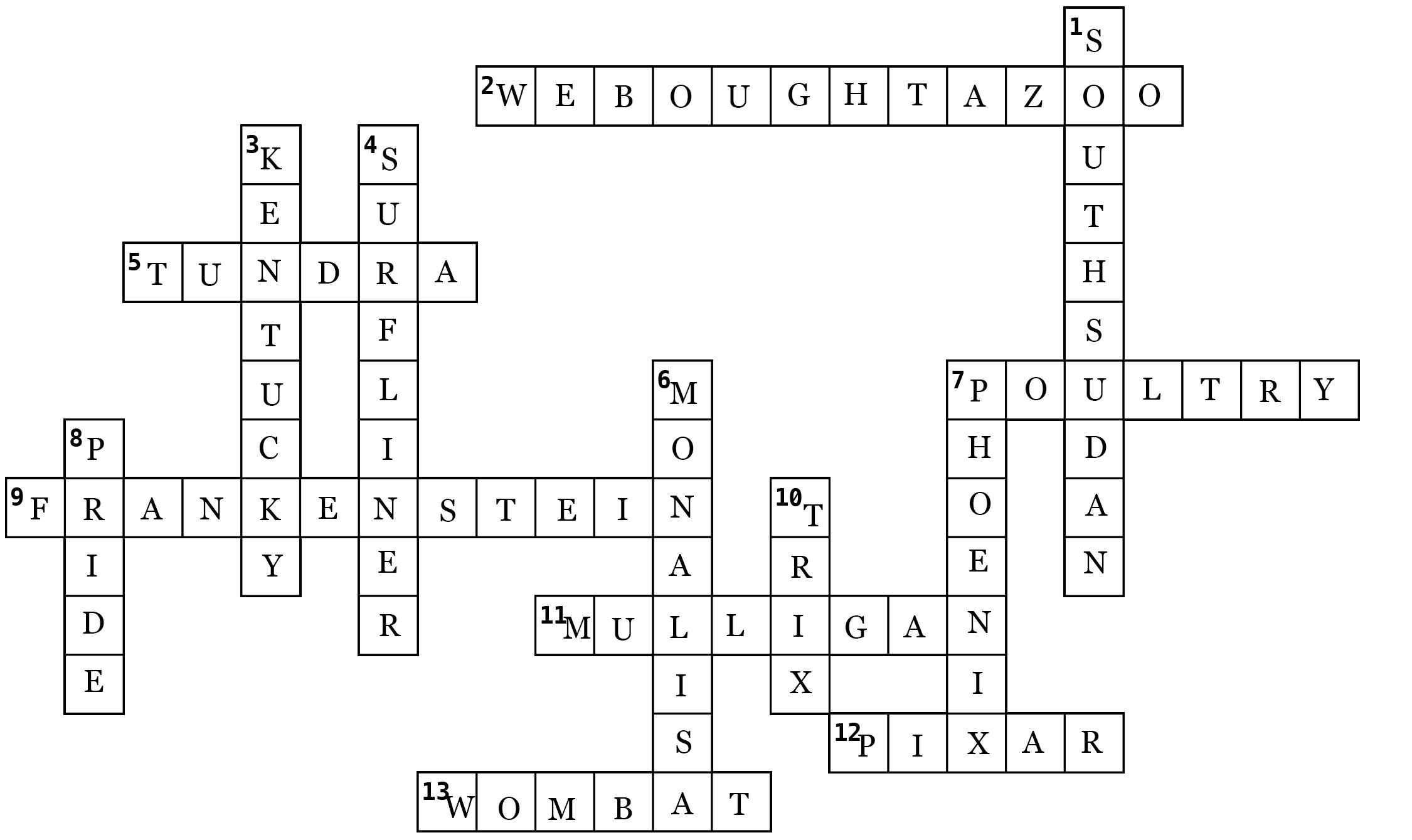
Friends tend to spend more time in your life than a significant other, making those breakups hurt more than a relationship coming to an end.
Photo courtesy of @Kelly Sikkema/Unsplash
OPINION
USD should rework the LLC Volunteer hours could build community
ALEX KUETER
ASST. OPINION EDITOR
USD’s Living Learning Communities, or LLCs are a unique and iconic part of first-year living where students are sorted into six groups, or communities, correlating with their residential areas. Students attend a class throughout the entirety of the semester with members of their LLC. During their second semester, students are placed in another LLC class with different students from the same living area. This program aims to connect students to each other and to the greater USD community, to facilitate learning and an easy transition into college life.
While the goal of this program is to build community, I think that it can be sorely lacking. Many people find great joy and friendship in the program, but that can often be based on factors such as the level of participation of your advisor.
Some advisors may try to foster a well connected group, while others focus more on the class material. Those without an exuberant leader may not meet or connect with their classmates at all, besides at the required LLC showcase. The showcase is a huge event that allows students to display what they have learned in their two first-year LLC classes that connects to wider goals.
I think changes need to be made to the program — in a way that makes people spend more quality time together, and connects them with San Diego as a whole. This can be initiated by incorporating volunteer hours as a part of the program.
In addition to the regular class hours that all classes must meet, LLC classes require an additional hour allotted per week to use for the LLC program. This is sometimes used for official program activities, but can also be used by the LLC professor for study purposes.
The LLC hours as a whole are used to facilitate connections between students and the USD community according to Gabriella Rangrej and Amanda Petersen, the Learning Communities co-directors.
“LLC and TLC Hours are weekly built-in community time,” Peterson and Rangrej said. “These are set blocks in new students’ class schedule reserved just for Learning Communities activities — a chance to connect, grow, and make the most of their USD experience.”
Additionally, while there are some scheduled events, the program intentionally leaves the
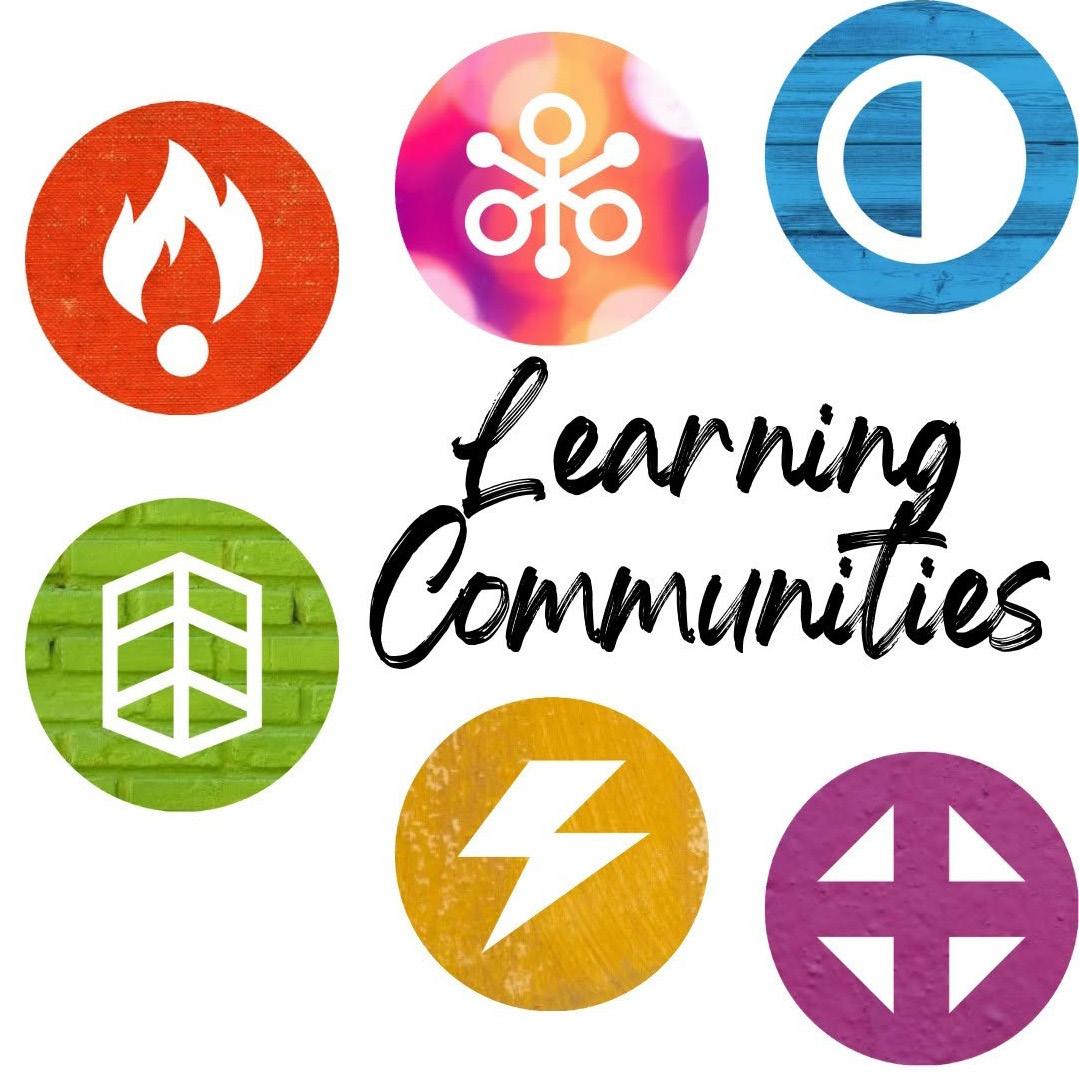
block of time open for students.
“LLC and TLC Hour events do not take place every week, and that’s intentional! On weeks without scheduled programming, we encourage students to use this time to form study groups, catch up with other people in their LLC/TLC theme, explore campus resources, or have a moment to take a break.”
This did not happen for me and I don’t think that my two LLC classes helped to grow community.
This hour, in my experience, was rarely used until the spring showcase where you complete a group project with classmates at the end of the spring semester. Otherwise, this block becomes free, and I think it could be best utilized for volunteer hours.
If each LLC class had a required amount of volunteer hours, they could accomplish them as a group throughout the year.
Nothing brings people together like going through a difficult or taxing experience.
While giving back to the community can be both physically and mentally challenging in productive ways — ways that are much more productive than wasting an hour a week your first year of college.
Some of my closest friendships were formed or strengthened while working at my local humane
society or gardening for senior citizens. These were volunteer opportunities that I sought out for myself, but imagine what USD could do for the community if this was a mandated event.
According to an article by the Mayo Clinic, a non-profit medical center and research group, volunteering helps to both bring people together and strengthen friendships.
“Volunteering increases social interaction and helps build a support system based on common interests,” Mayo stated. “One of the best ways to make new friends and strengthen existing relationships is to participate in a shared activity.”
This could also help students establish themselves in the San Diego community. Many of us need volunteer hours anyways, whether it be for greek life, academic organization or even just random clubs that we might join. Having an idea of organizations that we can work at and connections will be a huge help in the future.
USD students have a lot of privilege. We can’t ever forget how lucky we are to be able to attend higher education, especially in such a nice and expensive city. Tuition is no joke, and being in this incredible city has the
downside of sometimes breeding entitlement or carelessness for our less fortunate community. Requiring volunteering would help ground people and remind them how important it is to give back when and if they are able.
There are some valid oppositions to this idea, students famously don’t have a lot of spare time lying around, and adding a requirement like this could put a lot of strain on those working jobs or who have other commitments. This is absolutely true, but the hours don’t have to be in the hundreds, even requiring five hours a semester would benefit Toreros. Especially if they were completed early in the semester before classes and tests become too busy.
Another counterpoint is that transportation could be a struggle, but there are many non-profits within a half mile of USD, and 10 more within a mile or two. Toreros could walk, The USD trams or other public transit can be utilized.
Some volunteer opportunities that already exist on campus include the Torero food pantry, and other visiting organizations that need assistance. The idea for volunteering is not a new one, in fact, the LLC program had at one point considered adding them.
“Our team has previously
explored the idea of creating volunteer opportunities in the LLC/TLC experience in collaboration with the Changemaker Hub and Mulvaney Center,” Peterson and Rangrej said. “However, for a variety of factors and best practices it was decided it was not best to pursue them further … Our current strategic direction is to allow each LLC/TLC class to determine what types of activities are best for them to build community rather than have a fixed model.” I think it is worth revisiting volunteering as a requirement for the program. Volunteering is a huge benefit for people, and there are few other years that Toreros have built in time to do it with friends and peers. By requiring Toreros to build one with work and service, they will be all the better for it. The logistics behind the volunteer requirement would admittedly be a challenge at first, but I think if USD committed to partnering with organizations and rotating LLC’s and students through, we would all be better for it. We all need to give back to the community that supports us, and by requiring first years to participate we would help make San Diego a better home for them, and for everyone else who lives here too.
The views expressed in the editorial and op-ed sections are not necessarily those of The USD Vista staff, the University of San Diego, or its student body.
First-year Toreros are met with many new things when they first get to campus, one of the most prevalent being the LLC.
Photo courtesy of @Kelly Sikkema/Unsplash
USD returns from 21-point deficit
Toreros storm back to stun Princeton in historic road win
In Princeton, N.J., at Powers Field what started as a nightmare turned into a defining moment for the Torero football program. On a humid Saturday evening in N.J., the University of San Diego Toreros reversed what appeared to be a blowout, overcoming a 21-point deficit in the first quarter to stun Princeton with a final score of 42–35. This comeback was remarkable and unprecedented.
At the end of the first quarter, the scoreboard painted a bleak picture: Princeton 21, San Diego 0. The Tigers had easily penetrated the Toreros’ defense, racking up 338 yards in the first half, finishing drive after drive with impressive long passes and powerful runs. By the end of the second quarter, the score had swelled to 35-14.
For many visiting teams facing an Ivy League opponent, the game might have felt over at this point. However, USD stood their ground and refused to back down.
Both of the Toreros’ quarterbacks proved effective in keeping the team competitive.
USD sophomore Tyler Voss handled the majority of the passing responsibilities, completing 25 of 34 attempts for 237 yards and three touchdowns. USD freshman Dom Nankil stepped in at key moments, and together, the two QBs combined for a total of 352 passing yards. Their targets spread the field, giving Princeton’s secondary fits. Wideouts graduate student Josh Heverly — eight catches,
two touchdowns — senior Cole Monach — seven catches— and sophomore Christopher Hall — seven catches — all chipped away at the lead, ensuring the Toreros stayed within striking distance.
Heverly’s remarkable onehanded grab for a touchdown sparked USD’s scoring, but Princeton’s offense remained on top in the first half. It was during the halftime break that everything changed.
USD Defensive Coordinator Bobby Jay had his unit come out looking completely different from the group that had given up five touchdowns in the first half.
In the final two quarters the Toreros’ defense tightened up, allowing just 64 total yards and no points. Princeton lost its rhythm; running lanes were closed off, and the quarterbacks were forced into making rushed throws.
USD senior linebacker Ryan Meloche led the resurgence with 10 tackles, while USD sophomore and defensive lineman Nate Fischer provided key pressure. Suddenly, the Toreros were swarming to the ball, and the sideline was filled with energy.
The highlight of the night came from a senior making his first career start. USD senior running back Adam Criter, filling in for the injured standout Matt Colombo, became the team’s driving force. Criter carried the ball 25 times for 105 yards, but the statistics only hint at his actual impact. In the fourth quarter alone, he scored three consecutive touchdowns each time charging into the end zone untouched. The defining moment of the game came with 1:04 remaining. After an
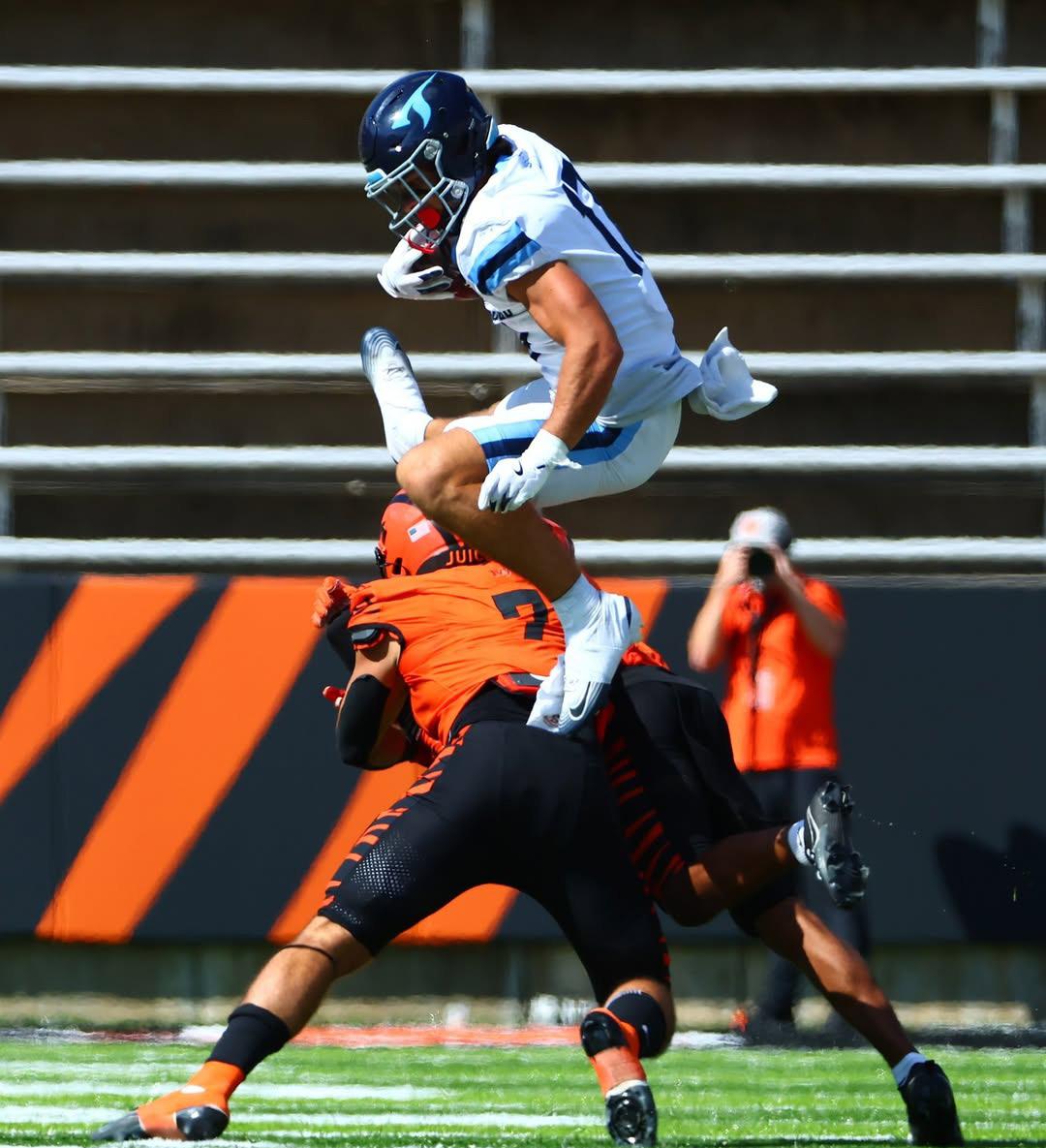
11-play, 81-yard drive led by Voss, Criter took a handoff on second-and-goal from the eight. He broke free and sprinted into the end zone, giving San Diego the lead for the first time that night.
One final test remained. Princeton had 64 seconds to answer, and the Tigers swiftly moved down the field. With just eight seconds left on the clock, Princeton’s
quarterback Kai Colon launched a desperate Hail Mary pass toward the end zone. A hush fell over Powers Field as players in orange and white jerseys converged.The ball was battled down and the Toreros were victorious.
The players sprinted onto the field, filled with a mix of disbelief and jubilation. For a program that is recognized for its Pioneer Football League
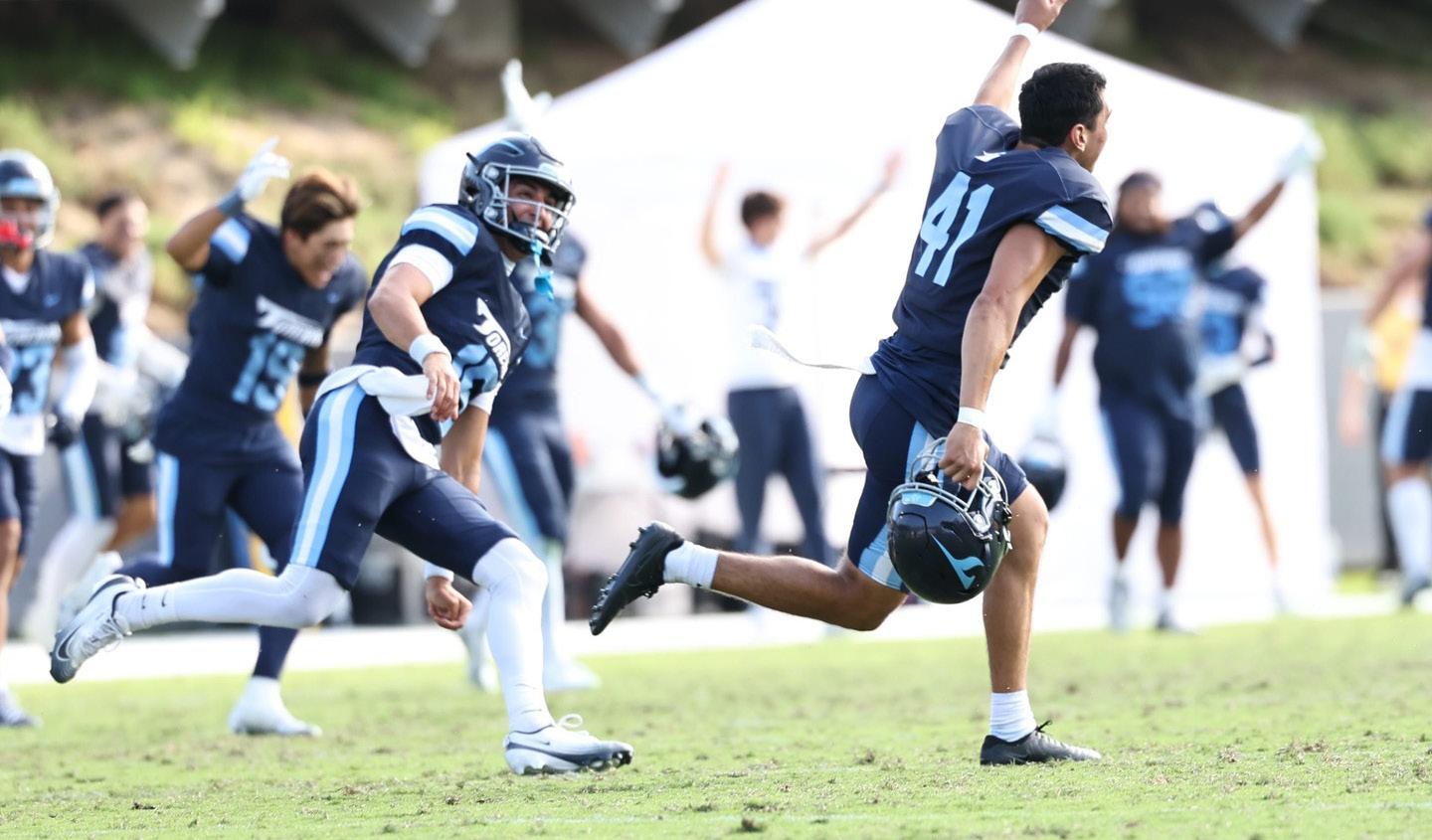
titles, but often overlooked on a national level, this victory made a strong statement: San Diego can compete with the Ivy League and emerge victorious.
In just his second season as head coach, Brandon Moore viewed the victory as more than just a statistic in the win column; it was a demonstration of proof of concept. In a post game interview Moore explained the Torero’s stance.
“It’s a statement for the program that we can win games like this when things aren’t going well, and we can turn it around and capitalize,” Moore said. “His team showcased resilience, adaptability, and trust — qualities that not only win games but also build a positive team culture.”
The recent victory gives USD a solid 2–2 record in non-conference play as they transition into the Pioneer Football League (PFL). This momentum is a valuable asset that extends beyond the statistics.
The Toreros defeated St. Thomas in their PFL opener, on Saturday, Sept. 27. The final score was 30 - 27, even though the Torero’s were originally down at first, similar to the game in New York. USD Football is heading back to New York to take on Marist at Leonidoff Field on Saturday, Oct. 4.
USD senior Cole Monach jumps over defense at Powers Field in Princeton, N.J.
Photo courtesy of @usdfootball/Instagram
USD Torero’s celebration after an unexpected win over St. Thomas. Photo
NOLAN LUMBY CONTRIBUTOR
Tarvet returns for unfinished business USD tennis superstar back after competing at Wimbledon
From Tarvet, Page 1 best to try and focus on what was important to me and that was just, you know, actually playing tennis.”
Tarvet talked about the emotions surrounding being able to play in Wimbledon and what it meant to accomplish such a feat.
“I wanted to embrace the moment and make the most of it,” Tarvet said.
“And that was a big goal of mine as well, going on to it is actually to enjoy the emotions and enjoy the opportunity rather than seeing it as like a bit of a big stage to fail, because obviously I was like the overwhelming underdog, going into that match,” Tarvet said. “But I tried to actually see it as an opportunity to go out there and try and compete against maybe the best tennis player in the world right now.”
The USD senior is originally from England and expressed what it was like to not only be able to compete in such a renowned tournament, but also how it felt being able to compete somewhere he grew up so close to.
“I live probably an hour, maybe an hour and fifteen away from Wimbledon,” Tarvet said. “I always went there as a kid. My mom was really big into tennis. She was a massive Nadal supporter. That’s kind of how she fell in love with tennis, and kind of how she got me into tennis as well. So I have some fond memories of me and of me and her, and, you know, my dad and my sister going to Wimbledon each year. And it was a dream to be able to compete there.”
Tarvet had previously played on the courts where Wimbledon takes place during his adolescence and younger years playing tennis.
“I played the junior tournament at Wimbledon, which was really
cool, but to actually play the main event and not only play qualifying ball, was really special,” Tarvet said. “Like knowing that I always had that dream as a kid is, you know, something that I always wanted to check off, and it does feel pretty good, you know, that I was able to play in the tournament. I always went as a kid, and really enjoyed watching all the pros and kind of hoping that one day I would be amongst them, and it was nice to be amongst them for a week at least.”
The actual tournament was a lot different and with the change in competition level, is a change in mindset as well. That perspective Tarvet carried through the games was rooted in the mindset that every athlete must adopt in order to compete at the highest level.
“I feel like, as a tennis player and just as an athlete in general, you have to be, like, almost delusionally optimistic,” Tarvet said. “I knew the odds were heavily stacked against me, but, I still had to have, even if it was a really small glimmer of hope, hope that if everything went right that day for me, or, you know, like, then who knows what can come of that day. I feel like that’s what makes sports and athletics as a whole interesting, is the unpredictability of it. I try to not treat it any differently to, you know, the 1000 of the other matches that I’ve played in my lifetime.”
Tarvet tries to keep this same mindset alive for both collegiate and professional matches.
“Obviously from that week you take a lot of confidence,” Tarvet said. “I feel like, in sports you gotta try and build off any confidence that you can get. The tournament was a massive boost for me, knowing that I can compete

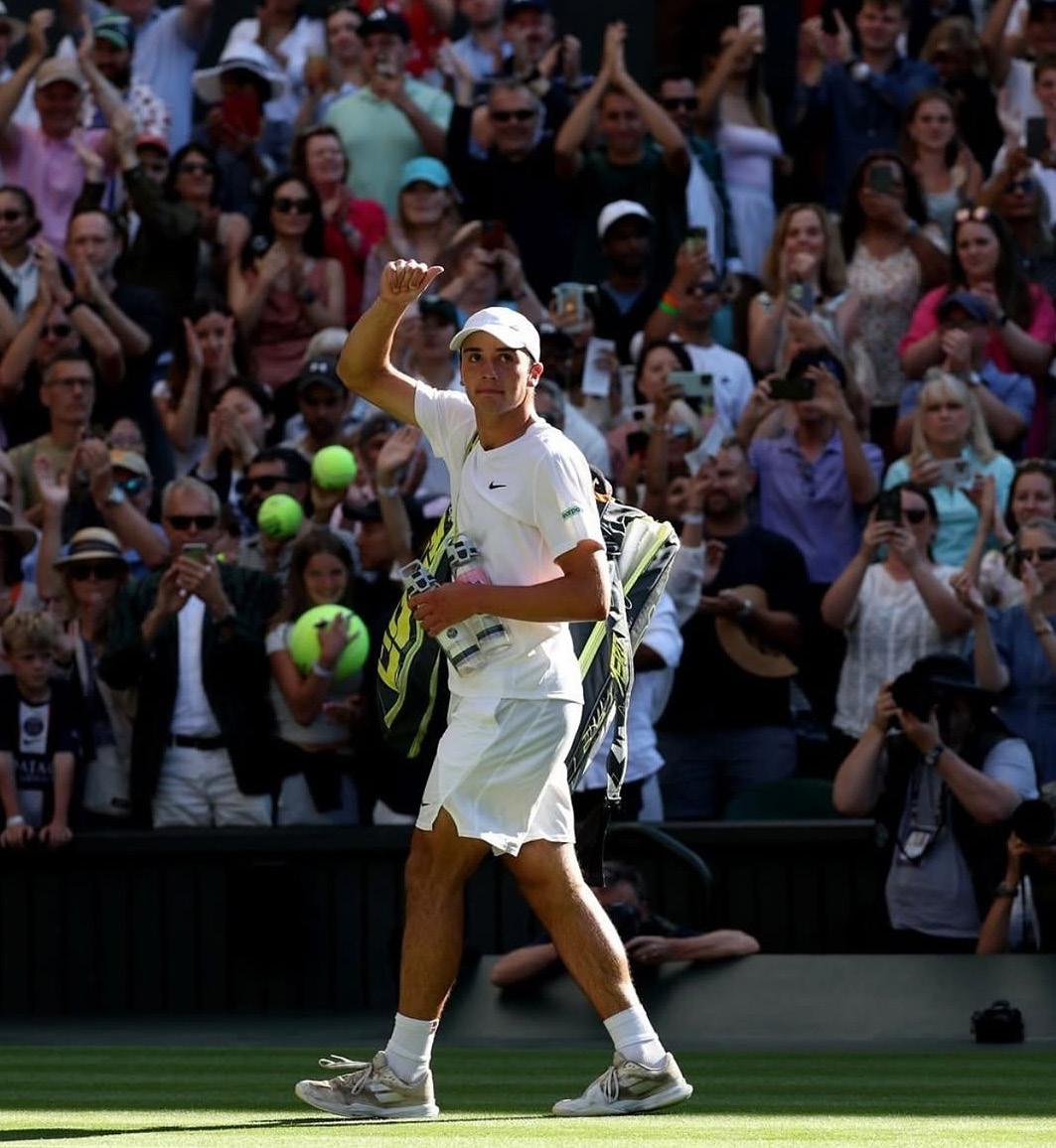
against guys who are top 200 or top 100 in the world, and not only compete but beat them.”
At the same time, Tarvet emphasized the importance of balance and being able to recognize success without letting it inflate his mindset.
“But again, I think as much as I took confidence from that, I still think it’s really important, and this is something that USD as a team preaches a lot, is to stay humble,” Tarvet said. “I think that just because you had one good tournament, it doesn’t guarantee that your next tournament is going to be the same. I feel like I got to that stage and I had a great tournament because of all the hard work that I put in over the last couple years and that’s not just a good couple months. As you know, it takes a lot of hard work and a lot of consistency to be able to play on that stage. And I feel like it’s important to remind yourself of why you got there.”
While Tarvet recognized the confidence the tournament gave him, he also stressed the importance of not letting success inflate his mindset.
“Obviously, it was a great opportunity,” Tarvet said. “I feel like if I want to continue doing those things, I gotta not let that get to my head. And I feel like there are a lot of people, you
know, who try to inflate your ego. I feel like you see a lot of pro athletes do it, you know the ego maybe gets a little bit out of control, and they stop doing what gives them success and what has brought them success, and then, you know they, they stop having results and stop improving.”
Tarvet discussed how humility plays a role in being a good athlete and what it takes to compete at such a high level without letting the pressure and fame get to his head.
“I think not only as a tennis player, but I also think as a person, humility is really important,” Tarvet said.
“But I mean, the matches I’ve won, it doesn’t change who I am as a person. It’s not to say that I don’t really appreciate the support that I’ve received, and the opportunities that I’ve had to throw first pitches and be recognized. Of course, it’s really cool, and I really appreciate it, but as soon as it’s over, you have to kind of come back down to reality and get back to work.”
That grounded approach also shapes how he views the road ahead to the NCAA’s and both individually and with his teammates.
“I still think we’ve got some unfinished business as a team,” Tarvet said. “And I also wanted to come back, because at the end of the day, I owe everything to USD like I wouldn’t be in this situation without their help and unconditional support.”
While Wimbledon was a huge accomplishment, Tarvet explained how one of his next goals was to win an NCAA title while he is still playing for the University of San Diego.
“As a team, the NCAA is obviously a big one, we didn’t have the tournament that we wanted to last year,” Tarvet said. “But I think we have a really strong group, we have four seniors who I have a lot of faith in. And I think we can really go deep in this year’s NCAA’ s. We broke a lot of records last season and had a career high ranking of six. But, you know, I don’t think there’s any reason, looking at the team that we have and the culture that we have, why we can’t go even deeper than that.”
Tarvet explained how he plans to carry on his tennis career after graduation and his future intentions to play professionally.
“I’m taking this semester off to play professional events,” Tarvet said. “And, you know, just live the professional lifestyle for a bit, and then, come back for one more semester with the team in the spring, and then, and then go Pro full time for hopefully many, many years.”
The Toreros will look to clinch the NCAA title and have their next competition at the San Diego Veterans Tennis Classic from Oct. 3 to Oct. 5.
USD senior Oliver Tarvet steps on to Centre Court at Wimbledon. Photo courtesy of @usd_tennis/Instagram
Tarvet shakes Alcaraz’s hand after the match at Wimbledon. Photo courtesy of @usd_tennis/Instagram
